Executive Summary
The purpose of this dissertation is to assess the impact of fishing quota regulation on the fishing industry of South Africa and this study focus on the Irvin & Johnson case to observe the current position of fisheries.
The first chapter concentrates on the historical background of fishing quota regulation, importance of quota system, rationale for this study, point out research aim and objectives, raise research questions, find out the scopes, and limitations of the study.
The second chapter describes the theoretical framework on fishing quota regulation and quota management supported by the most recent authors and remarkable researchers recognised by the academia and economic development agencies.
Therefore, this part describes the quota management and business competitiveness, significance of quota for market sustainability, strategic cost management, Porter’s theory of strategic cost analysis, fishing quota regulation’s impact on the profitability, common fishing quota regulation and current amendment and global fishing quota management.
The methodology of this study makes it clear how this dissertation would design with qualitative and quantitative research approach to discuss the influence of fishing quota regulation on the fisheries like- Irvin & Johnson (I&J).
On the other hand, findings and discussion chapters focus on the basic influence of fishing quota regulation upon the operation and strategies of fishing companies, particularly on the I&J, and last chapter considers key issues of previous chapters to draw conclusion and to provide of key recommendations.
Problem Statement
Introduction
This dissertation would analyse the fishing quota regulation of South Africa with the aim to explain and investigate how the quota regulation has influenced and affected the fishing industry with a case study of Irvin & Johnson (I&J), the market leader South African fishing industry based on their current market position.
This paper would be organised and chronologically explored with six major chapters and these have demonstrated as below-
Problem Statement
The first chapter ‘Problem Statement’ is the introductory part of this dissertation, which provides the overview of entire paper with the background of the research, research gap, and rational of the research. In addition, this part of the dissertation will raise research questions, enlightens the scopes and drawbacks of the research and research objectives.
Literature Review
The second chapter has deliberated with the appropriate theoretical arguments on fishing quota regulation supported by the most recent authors and remarkable researchers recognised by the academia and economic development agencies.
This literature review would argue to answer the research questions from the perspective of theoretical framework first then it would also fit the literature on the operators and strategies of Irvin & Johnson (I&J) with the aim to assess the influence of fishing quota regulation.
This chapter would start on coherence with the introduction to fishing quota regulation, its impact on the market, competitive analysis, fishing management politics, its institutionalisation, and challenges of fisheries management including the opportunities of empowering social capital, distribution channel, consumer behaviour, and quota impact on customers as well.
Methodology
The third episode of this dissertation makes it available that the justification on how the current research on the influence of fishing quota regulation on the fishing companies such as Irvin & Johnson (I&J) would take place and the paper would argue for both qualitative and quantitative research.
Malhotra (123) demonstrated that the difference between quantitative and qualitative research is to collect and analysis the data in different way, for example, quantitative research methods may be direct focus group interviews and their numerical data while qualitative method has formed that is more subjective and depends on secondary sources.
Therefore, this dissertation would explore to the data collection processes such as direct interviews of the management and managers of Irvin & Johnson (I&J) as significance the primary and secondary sources. Besides the data collection, this chapter also enlighten on the limitation on data collection, reliability, and validity of the interviews would be illustrated.
Key Findings and Results
It is important among other chapters as this part based on the practical data and evaluation to bring the suitable solutions for measuring the effectiveness and influence of fishing quota regulation on the fishing companies of South Africa.
The tools of statistical analysis such as Microsoft Excel would briefly explain by using the several models on the collected data to measure the market risk factors, opportunities, external and internal factors, as well as environmental influences. As the researcher has aimed to interview with management and managers of Irvin & Johnson (I&J), the finding and result would be concentrated on I&J and then as while to the fishing industry.
Discussion
This chapter would discuss on the basic influence of fishing quota regulation upon the operation and strategies of fishing companies, which influence to industry trend for both small and large companies as well as stakeholders with relevant data.
This chapter would also compare the impact of fishing quota regulation of South Africa with other countries such as European and US market to demonstrate the effectiveness of fishing quota regulation of South Africa.
Recommendation and Conclusions: Finally, the chapter six of this dissertation would scrutinize all the discussion of previous chapter to draw significant conclusion and to point of key recommendations for fishing quota regulation of South Africa.
Background of the problem
Gordon first identified the fishery as a common resource of the planet, analysed the political economy of fishing, and pointed out that the free access to this resource would go ahead with overload fishing efforts, rakishness on the rents as well as unproductive reduction of fish resource (99).
Newell, James, and Suzi argued that such forecasting evidenced truth while two decades of speedy extension of fishing in England had spoiled the ground fish resources; consequently, bunged up since 1994 such evidence urged on the necessity of control and administering the fishing industry (3).
FAO (5) mentioned that 75% of the global fisheries stock has completely been consumed while the excessive fishing turned the ocean into almost fishless and the circumstances looked very crucial due to the number of highly migratory fishing resources across the deep sea those are deistically caught without any control or management.
The destruction of fish stocks at the increasing has signalled tremendous danger sign to the fish for future generation even though the deep sea fishing resources stand for just a very little portion of the global fishery where millions of populace are significantly striving for their occupation (49).
Under Article 36 of the UN Fish Stock Agreement, the member countries of the United Nations have come into a common platform with joint effort to introduce legislation with the aim to manage and administer the fishing resources. This global engagement also aimed to conservation and management of the fisheries resource as well as ocean ecosystem and this concord among the countries has given birth of Fishing Quota.
Newell, James, and Suzi pointed out that the historical evidence demonstrates until eighties fishing was an independent effort without any control and fishermen don’t any values or sense of ownership or future prospect and this valued resource utilisation was deeply concerned with size of ocean going vessels, category of using nets, length of season.
Such liberty has driven the fishing efforts to an unparallel competition of catching fish without any consideration.
Hersoug argued that implication of different quotas such as IVQ (Individual Vessel Quota) and ITQ (Individual Transferable Quota) or other licence regimes have demonstrated to achieving a very few of the objectives of conservation the fishery resources and the problem area even exist in some part of the globe while the rights-based fisheries management carried out both expected and unusual responds (7).
Hasan and John also presented the fishing resource allocation with a linier modelling (21).
Martin and Jesper mentioned that as an integral part of global fishing industry South Africa Fishing industry also going through different problem and prospect while the quota regulation has evidenced 75% of the industry share possesses by only two companies (4).
This type of centralisation of resources does not uphold the values of democracy and social justice and thus, the question rises what the contribution quota system kept in the South African fishing heritage!
The deep-seated struggle among the stakeholders of fishing industry of South Africa that has been rooted in the vigour of society and an unavoidable part of the African Political dynamics where the ANC (African National Congress) ascended to the state power of South Africa in 1994 with their manifesto of urging reformation and development of the country with their RDP Programme (Reconstruction and Development Programme).
The government of South Africa faces great challenge to reforming the fisheries sector though it was their commitment to the nation, people ask for easy access rights for the black fisherman, campaign for reasonable quota distribution system among the real fisherman including the black though the existing system has been criminalized and centralised by the whites.
The present government is deeply concerned to address the peoples’ acceptation with proper policy reformation in the Fishery sector, thus, it would be a time-honoured imitative to examine what impact has fishing quota regulation kept in the Fishing Industry of South Africa.
Rationale for the research
Many scholars tried to find out the solution of the question how fishing quota regulation has been maintaining in the Fishing Industry of South Africa; some of the researches have aimed to investigate how the fishing industry going to centralise within a few companies.
A very few of most recent research addressed how people are losing their trust to the existing fishing quota system as well as how the South African fishing industry would gain stability and stakeholders confidence from last era.
Most of the contemporary researchers have concentrated on the fishing quota regulation, distribution and regulatory reform in the fishing quota regulation, but no overarching research agenda has yet been proposed on whether the fishing quota regulation has direct impact on the South African Fining industry or not.
Béné (7) analysed the fishing industry as a prospective sector for African Economy has been flourishing the market in the same traditional manner without any changes in their market share or distribution quota has no major impact in the economy or real resource allocation.
Such researches concentrated on the background of quota introduction and spotlight with special attention on how two opposite, but essential dialogues regarding the responsibility of fishing companies in the national development as well as food security in South Africa (4-17).
Normann (11) focused that South African Fishing industry, identified the dilemmas of definition making while he identified a strapping conflict among the stakeholders and resource management, and supported for a co-management based democratic practice where the all representatives of stakeholders in the industry would be involved at decision-making process.
With the aim to consecrating, the fishery resources, which are concerned with to putting a stop to the over-fishing, but the reality demonstrated negative prospect on the resource (8).
Britz et al (21) argued that the Marine Living Resources Act -1998 of South Africa has been grounded on the platform of equity, justice, sustainability, and steadiness while the act has worked as a tool to administer and control over the fishery stakeholders including the angler, but due to different organisational goal and conflicting strategies.
Above all the African people have the dream of equity based resource allocation in the fishery sector, while the government also soft to this demand due to their election commitment, but the organisations as if I&J already owned 75% of the national resources (6).
The rationale of this research is to analyze the impact of fishing quota regulation experienced by observing the real scenario of Irvin & Johnson (I&J) to evaluate to what extent fishing quota regulation is effective to retain stakeholders interest and increasing awareness to administer and conservation of fishery resources.
In addition, the ownership and resource allocation through quota system has escalated the awareness of regulators to take control over the South African fishing resources and bring back the people’s confidence; this dissertation will assist the academia, regulators, and stakeholders with better understanding about the fishery management including its driving force such as social ownership and its rational allocation.
Through this investigation, the large companies will get a potential investment environment to increase fishing stock and the small fishing companies will get a better level of confidence, which will provide the companies a practical advantage over their fishing efforts.
Research Aim and Objectives
The main objective of this study is to examining the performance of fishing quota regulation of South African government that is functioning in the existing fishing management and its impact on the fishing companies both small and large companies while the Irvin & Johnson (I&J) is a case study approach.
This dissertation also aimed to understanding the different type of influence of quota among the stakeholders and how the increasing awareness with the fishing quota becoming pressure to the government for restructuring the quota system.
Throughout this investigation, this paper would keep keen eyes on how the fishing companies would respond and measure the impact from legislation implementation and to what extent the government intervention is keeping positive or negative impact on the fishery resource and its proper allocation and management.
As the governmental policy reformation efforts already taken into account to restructure the quota allocation, it is essential to address what social impact is the driving force for such reformation, to what extent the new legislation would allow government intervention, and how it directly influences on the profit generation of the fishing companies including the limitations the governmental efforts.
This dissertation has aimed to explore the effectiveness fishing quota regulation of South African by considering strategic tools and parameters and assess how the regulating authority would manage their fishing resources more efficiently than ever before.
To do so, this dissertation also deals with few imperative questions for instance what would the fishing company’s strategic change in the markets, what distribution channels are the companies planning to exploit as well as how does this contrast with the competitor as well as public relations, and promotion plans.
Research Questions
This dissertation has intended to response the following research questions to support the topic area with proper evidence. The main objective of this research is to analyse what are the impact of fishing quota regulation of South African and how the fishing quota influence the development and growth of companies like Irvin & Johnson (I&J) and to do so this paper would raise four research questions and these are –
- To what extent the conceptual framework of quota links with business competitiveness and sustainability.
- How business competitiveness and sustainability depends on strategic cost management in business environment.
- To what extent fishing quota regulation can influence on the profitability of a business under such business environment.
- To what extent I & J drives itself to gaining business competitiveness and sustainability under existing quota system and how it responds to any new quota allocation.
The raised research questions are important to examine the effectiveness fishing quota regulation, and these questions would ultimately assist to draw the conclusion of the dissertation.
Limitations of the study
The author of this dissertation had faced number of problems to research on this area, such as –
- Some instructions concerned with this project were too complex to communicate, for example, fishing quota regulation in South Africa and how this regulation affected the fishing industry was required to discuss in light of legal aspect, but it was difficult for the researcher to deal with legal issues from the legislators views, but due to lack of time and other constrains legal personalities are not interviewed;
- One of the main problems was the low response rate as respondents were either busy with their own occupation or they were reluctant give discuss on this issue due to lack of knowledge in this particular area;
- Most of the time, the management of the large companies are not intend to reveal the actual position of the impact of regulation, so employees also show same attitude;
- On the other hand, the author got very short period to plan or conduct research and completed the paper;
- To gather data from respondents, the researcher has suffered numerous problems, as the employees of I&J were too busy, many respondents completed his survey form after finishing the entire project;
- In addition, budget was another significant subject for the researcher to gather both secondary data as well as primary data from interviewees.
- There are too many secondary resources were available in the internet, books or journals, but most of the sources were full of irrelevant data and it was another problem of the researcher to formulate the paper in proper way;
- Recently, there were several journal articles upon how fishing quota regulation affected fishing industry in South Africa, which apparently seem important to researcher by reading the abstract, but the price of the entire paper was too high to purchase as the researcher was not confirmed that whether those would be applicable or not.
Scopes of the study
The author of this study has unlimited scopes besides the limitations to conduct research, for instance–
- The researcher has opportunity to examine both negative and positive side of the fishing quota regulation in South Africa;
- In addition, this paper would point out how fishing quota regulation directly affected the small companies in this industry;
- The researcher of this dissertation has scope to conduct a real research on Irvin & Johnson (I&J) to assess the impact of fishing quota regulation in South African Fishing Industry;
- The author has scope to focus on both qualitative and quantitative research approach in order to design this paper though the number of words was sufficient to cover most of the issues to get proper outcomes from this research;
- The entire study will help to provide fruitful, realistic and applicable suggestions and recommendations to develop the fishing industry of South Africa;
- This dissertation has also scope to provide the conceptual framework of quota; strategic cost management in business environment, fishing quota regulation can affect the profitability, and so on.
Summary
Introduction provides the background of the study including research aims and objectives, research questions, the scope and limitation of the study and rational of the research to observe the fishing quota regulation of South African in context of Irvin & Johnson (I&J) and the continual outcomes.
Relevant Literature Review
This literature review of assessing the impact has fishing quota regulation on the Fishing Industry of South Africa has been aimed to respond to the evaluation of the literatures those provide logical appraisal to the raised research questions.
At the same time, this literature review would keep its effort to analyse the evidence of I&J, that fits with the answers to the research questions generated from the perspective of theoretical framework connecting the endeavour to assess the influence of fishing quota regulation.
Theoretical framework of Quota Management
In the viewpoint of business constituency, the term “quota” has referred to the proportion restricted for the industries those have struggled for shortage management of resources in order to boost their production and sales volume. According to the MAS (Model-Assisted Sampling) quota of a specific business or industry has to be attributed through industry profile, ideal region to business operations and human resource quantity in this division.
Considering these three major issues government and non-government organisations can easily enlisted under business quota of the government and hence able to consume required resources to boost their production as well as sales in both domestic and international markets.
Additionally, industries under quota have kept their profit margin by utilisation of the strategic cost management module. (Berzofsky et al. 4)
The most practiced quota system would find in the agricultural, mining, fishing, real state industries those are directly inked with the utilisation of natural resources though in the modern world in some counties, quota system has implemented in export, import, retail and wholesale.
Dynamics of Quota Management
Siebel Systems (3) identified the following are the key dynamics of quota management –
- There should be a clear vision of industry outline where performance appraisal of business industry have to be evaluated during pre-determine time-frame (Monthly, quarterly and yearly)
- It has strategically illustrated that the quota definition where each and every segment of the industry has plotted proportionally or prorated production and sales volume,
- Quota dynamics also illustrate a performance appraisal account where prediction, expectation, as well as profit margin at the end of the business period should be compared.
Pearce (20) added that the quota dynamics are concerned with business sustainability where the significance is that the successful businesses are increasingly faced to the competitive markets necessarily have access towards exclusive, unbreakable capabilities, strong competences, along with quasi-assets with the aim to gain top position in the race.
It has also argued that this is not just an effort to simply gaining access towards the mentioned assets to gaining the competitive advantage, while the practice would actuality gain such attributes from the greater orchestration of those resources as well as designing capabilities.
Consequently, the struggling company would repeatedly keep its effort to creating and marinating or enter by force to the practice on monopolies, more or less pedestal on intangibles. The Dynamics of business sustainability concerned with the dynamics of quota management has presented in the following figure-

Quota Management and Business Competitiveness:
Sustainability under competitive market, business quota has directed an industry towards maturity by striving under a controlled system and closed resources.
Policy makers of the business quota have taken into their account that whether new professional skills as well as team management of organisation’s entire department would be required to amend. Three major departments (Production, selling and human resource management (HRM)) of an organisation have mentored through following nine chief steps/stairs for the progress of professional skills. (Alexander 1–4)
Firstly, make a clear vision of obligatory specialized skills as well as guideline for the sales department’s success within a certain period. As stated by following list lower than 35 score has treated as crisis of necessity to be qualified.
Second, it is the level to be aware of consumer’s emotion and it has to be quoted that sales volume has not fluctuated only by company policies (features and functions; negotiating about price and delivery; or handling objections) but also consumer’s connectivity (trust, experience, talent, scope of the work, and understanding the totality of your customer’s business) in conjunction of organisation’s staff.
In short, integrated contribution of entire team management has been including necessary training in order to assist an organisation to get better competitive performance during the quota/shortage management. During band score of performance appraisal level 5 and 6 has considered ideal continuum.
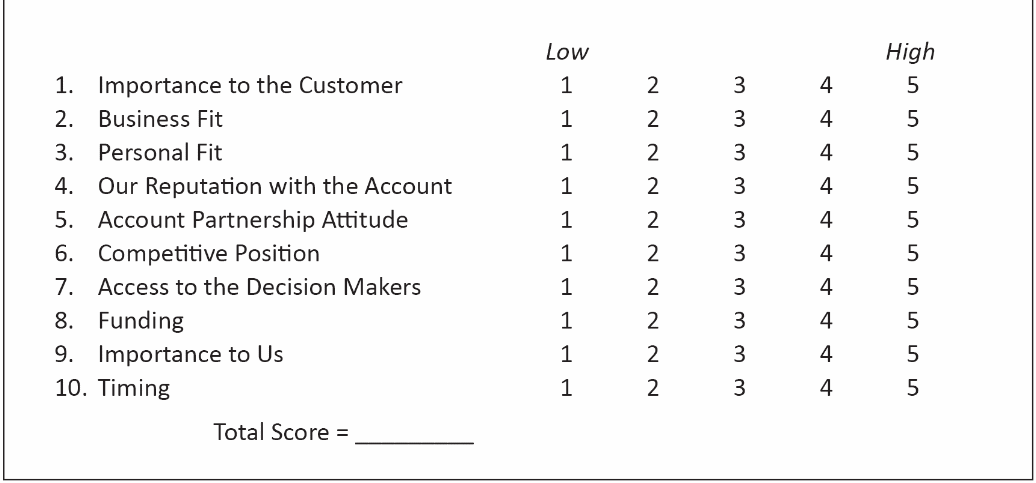
The third attribute to qualifying quota is assembling the six major aspects (focus on meeting project delivery objectives and leaving all business development, mentions potential opportunities, communicate and qualify the client need, pass them on to client sales, work with client sales to develop proposal, develop proposal and present to client) of business development has provided technical support to enjoy business competitiveness during quota management. More specifically, operation stages have more effectively influence sales atmosphere.
The fourth attribute to qualifying quota is emphasise on consumers segmentation of the professional services, where quota market demand, market potentiality as well as pricing strategies have to be analysed. During consumer segmentation, business competitiveness has to be concern on actual demand of a customer either quality or innovation and partnership.
Fifth, to reach organisational vision, mission, goals, and objectives, the organisation has to be dynamic on proper nursing of the team management including superior features (a professional services mind set, the ability to clarify complex customer issues, skills in communicating the benefits of intangibles, insight on how to customize each solution, skills in compressing the sales cycle and how to commercialise the services sales promise, skills and capabilities today and need to acquire in the future) of skill development. Sixth, it is the level to paying attention on middle level executives who task where six Cs (customer, consistency, creativity, culture, communication and change) of marketing have to be highlighted to reflect business efficiencies as well as higher level of decision-making procedures.
During the next phase of quota management as well as business competitiveness have required selecting target market for preparing sales team proficiency as well as connectivity among each other for better decision making.
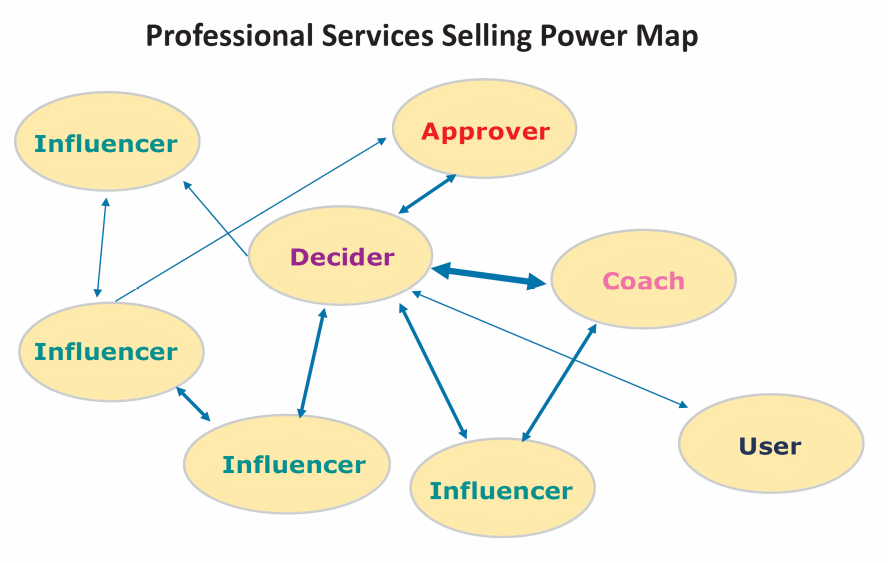
Another attribute to qualifying quota is connectivity among sales volume and performance evaluation and here supportive atmosphere (fitting the performance specifications, adequate resources, minimal interference, consequence management, and quality feedback) of the sales division can help proportionately to boost sales volume of the firm. Finally, get enter into the target competitive market and execute professional training skills to enjoy market competitiveness.
Significance of Quota for Market Sustainability
Quota management has following emergencies to construct durable business substantiality. Several affluent business industries have struggled long for survival and the business quota management has the proper efficiency to recover business survival challenges.
In short, quota management can be termed as a roadmap of long-term market sustainability. In the light of sustainability, emergence of business quota has following contribution. (Deloitte 5, 6)
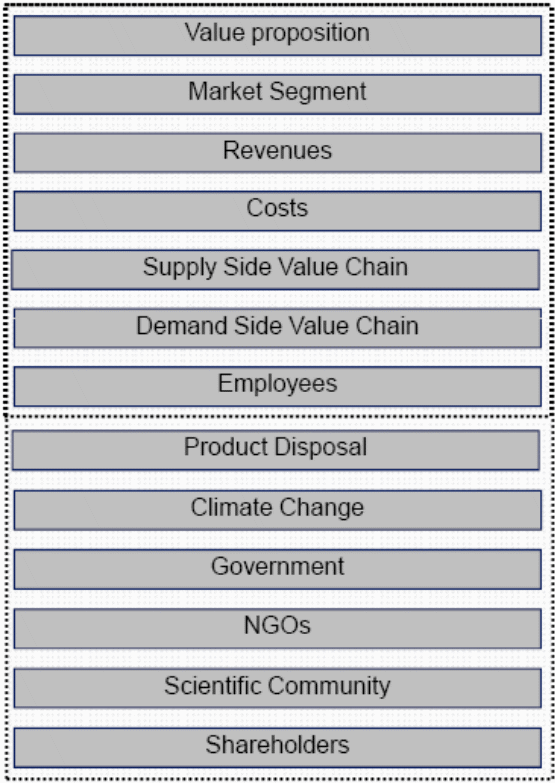
Consumer generation: consumers are the heart of a business and its market and the quota management have the expertises to design consumer segment and boosts consumer volume. In other word, business priorities have created through formulation of sustainable strategies as requirement of quota market entry as well as consumer priorities.
Accountability and transparency of the stakeholders: it has rather difficult for the business holders to keep transparency and accountability during international business operation and in many cases in domestic market as well. Quota management has the proactive managerial guidelines to resolve these ethical dilemmas.
Strategic cost management: cost management efficiency has required to business operation reengineering and sustainability of the current PLCs along with risk minimizing in the course of resonance ROI (Return On Investment).
On the other hand, fluctuations of raw material prices, balance between global demand and supply have made the foundation of organisation’s supply chain management. Here, quota management has directed the cost savings approaches as well as defence against the threats of upcoming cost burden.
Government aid through designing compliance regulations: it has a great challenge for the companies to monitor individual employee’s responsibilities, fair financial statements, as well as employee health and safety guarantee during workplace. Quota management has made obligatory regulations on audit reporting, inspection of compliance qualities and evaluation of gap among regulatory requirements and operations.

Connectivity of Quota with Competitiveness & Sustainability
Correlation among quota, competitiveness, and long run sustainability has encircled though following six major aspects. In this part of the paper, current scenario of the South African fishery industry has illustrated in consistent with the Porters’ five forces model and explained as below –
Attributes of the operational dynamics: The effective dynamics have included with the key forces of production, structure of labour wages, competitive production costs, and market availability of competitive infrastructures, those are currently occupied in the quota markets of South Africa.
Demand conditions: demand conditions have required considering both domestic and global agro product and service demand. Additionally, fluctuation of demand scale has also recorded for future decision making supporting tool.
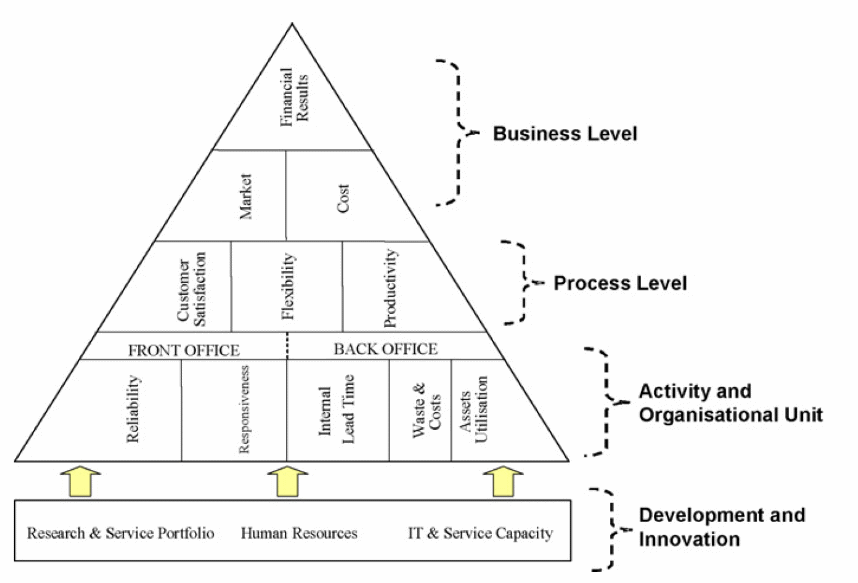
Supply chain management: commonly, supply chain management is trade-off among buyers and suppliers. Agro-business industry of the South Africa has passed a complex market power between these two parties. In recent years, managers of this industry have rather alert to resolve the threats of value chain activities globally.
Hypothetically, the supply chain management has needed to deal with four basic level of a business organisation like development level, activity/operation level, processing and business level. Moreover, contribution, delivery, and final- outcome of the firm have to be analysed.
Production costs: four key attributes (rationalization, cost cutting, labour management and cost effectiveness) of cost structure have patronized production cost of the industry and here R&D (Research and Development) has a significant role to reduce cost of production as well as utilisation of modern technology.
Pricing strategies: for the operation of sound supply chain of fisheries in South Africa have replaced their long-term contractual pricing strategies by spot market pricing, daily bargaining option and additionally, more focused on customized product and service market segmentation.
Macro issues and current rivalry status: macro issues of the South African agro business have mostly focused on external environmental dynamics and among those, this industry has suffered from clear direction of business policies of individual macro issues (quality of infrastructure and technology, economic and labour policy and availability of capital). Hence, competition in the global market has rather complex here-
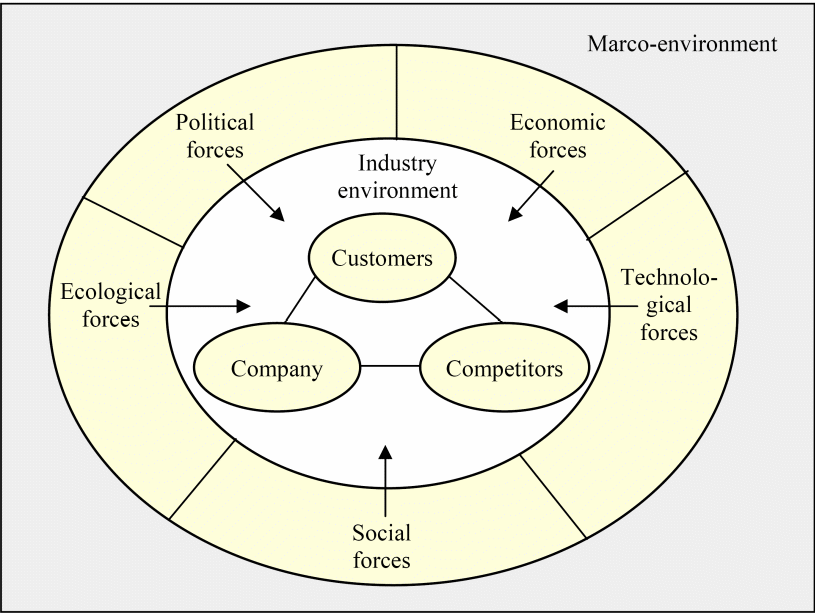
Strategic Cost Management and Business Competitiveness
Inter-dependency on SCM (Strategic Cost Management) of a firm’s competitive advantages as well as business sustainability have extensively influenced on superior performance of that business organisation. Traditionally, cost management has compact with per-unit base cost (unit-based drivers, allocation-intensive, narrow and rigid product costing, managing costs, little activity information, maximization of individual unit performance, using financial measures of performance, internal orientation and short-term perspective, strategic cost management) analysis of an organisation.
Conversely, apart from the cost-management, environmental analysis (unit and non-unit-based drivers, tracing-intensive, broad product costing, managing activities, detailed activity information, system-wide performance maximization, using of both financial and non-financial measures of performance, both internal and external orientation and long-term perspective) has also significantly highlighted and formulated in the area of SCM.
Considering detail account of the SCM, famous business analysts have symbolized the SCM as “Strategic Success-driver” because of its smarter contribution on organisation’s long-term success. Additionally, SCM has also operated diverse strategic levels (increase revenues, improve productivity and customer satisfaction and advance strategic position) where key concept of the cost-management has primarily focus on value contribution against investment (Kelety 20).
Definition of Strategic Cost Management (SCM)
Cooper and Slagmulder (4) defined that critically SCM is a survival skill for the modern business organisations where cost reduction is not a single function. More specifically, key attributes (low profit margins, low customer loyalty and low first move advantages) of the modern competitive market have drawn the significance of SCM as well as kept profit margin. Other than cost reduction, SCM has expertly improved product’s quality and lower lead-time of product manufacturing.
Additionally, it has difficult to sustain long time during market competition whilst organisations have technologically equivalent. In short, Cooper has concluded that SCM has essential for the organisation to survive through offering customized product and service at lower price (Cooper and Slagmulder 4).
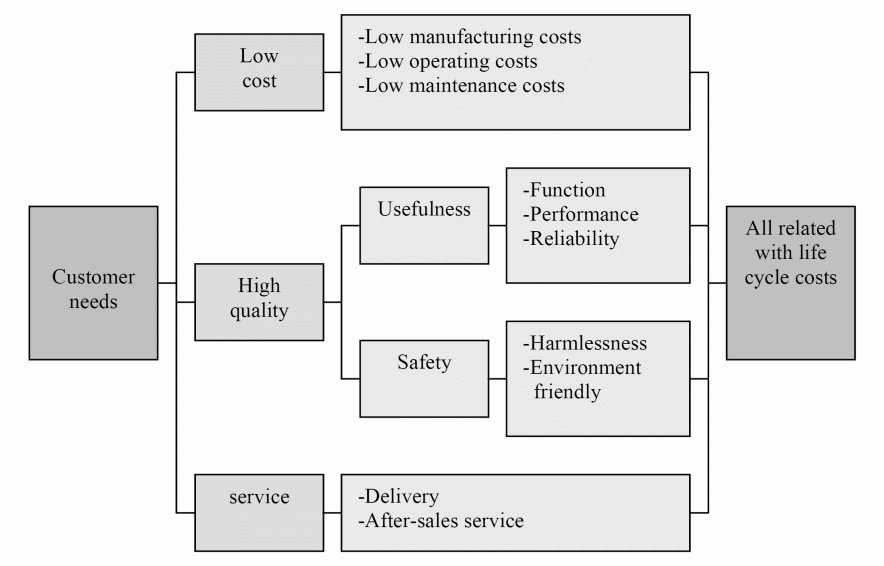
Monden and Hamada (3) pointed out that SCM is a discipline that has contributed shorter PLCs (Product Life Cycles), sharper competitive atmosphere, and customised product/services at lower costs.
On the other hand, as stated by Kato and Yoshida (4), the SCM is an applied cost management tool which has reduces costs of the company as well as holds the strategic position in the competitive marketplace though a sound supply chain management.
According to Gordon et al. (p. 1, 5), SCM is the architect for designing accountant’s potentiality of a modern business firm and hence flexible cost policies for a sustainable strategic market position.
Considering all of previously mentioned definitions Banker and Johnston (2), have constructed following four key assumptions on SCM- First, strategy formulation and second, connectivity among entire strategies of the organisation while the third is to formulate strategy implementation model and at the end, evaluate key success factors of the organisation

Korpi (4) defined that SCM has the skill to discover principle factors of an organisation; as a result an array of strategic information has provided by SCM to attain vision/creative objects (long-term anticipation and formation of costs level, costs structure, and costs behaviour pattern for products, processes, and recourses for attaining a strategic competitive advantage) of the firm. Therefore, it can be confidently affirmed that SCM has effectively reduced costs during early stages of the PLCs.
On the other hand, Hinterhuber (3) has studied that, SCM has enormous contribution on new market creation or constructing modern opportunities. Conversely, this study has evaluated that SCM is an integrated tasks or actions where stakeholders and the executives have easily taken proactive decisions.
According to the view of Lord and Lawrence (6), SCM is a mentor of directing entire costs model of an organisation and they further argued that SCM has integrated all of the strategic departments in order to attain consumer satisfaction.
Parkinson (3) described that, utilisation of cost materials have not restricted under SCM during hold profit margin and in short, SCM has built the pillar of company vision for ling time sustainability. For more clarification about SCM Porter’s view on SCM has described below.
Porter’s Theory of Strategic Cost Analysis
Defining correlation among SCM, competitiveness and business sustainability have drawn the value-chain theory during perfect competitive market. Under this discussion, Porter has argued that business competitiveness has primarily influenced by the company’s individual resource management as well as appliances of cost management.
Key concept of the theory has developed how companies would have enjoyed cost advantages under the complicated market competition. Alternatively, value-chain approach can be termed as the “Total System Solution” of an organisation (Datta 8).
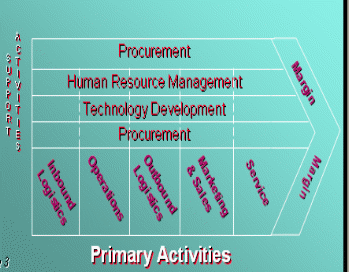
Escape from the traditional cost behaviour, value-chain approach has analysed long term SCM including major costs dynamics (economics of scale, learning curve, experience and so on) including their behaviour on cost strategies. Point has to be noted that, SCM has to be commenced with the research and development (R&D) division in order to reduce costs of PLCs beginning phase.
According to Porter’s substitute value approach, long-term sustainability of an organisation would be developed by three major strategies (cost leadership, differentiation and focus).
Key concept of the Porter’s theory has stand on five major primary activities including several supporting tools. On the other hand, major cost dynamics have specialized to build cost structure of an organisation. Detail account of the major cost dynamics has presented below. (Boadu-Amanor 1-3)

Key Drivers of Assessing Strategic Cost Analysis
Economics of scale: economics of scale has also stood for large scale of production, which has mostly controlled by greater financial resources and hence, R & D, production volume, marketing strategies. Analysis of the PLC has quantified that larger production scale has reduced cost of production.
Experience: the term experience has denoted the proportionate advancement of organisation and its internal resources including workforces. Necessary professional training is the most effective tools in this case.
Learning curve: The learning curve has represented organisation’s movements and effectively reduced cost of the firm. Alternatively, learning has treated as an operating function of a business firm.
Utilisation of the capacities: capacity utilisation has directly influenced on per unit cost pf production. More specifically, it is a matchmaker tool of demand-supply management,
Linkages: connectivity among direct and indirect costs has defined through connectivity and except this function performance cannot be appraised,
Interrelationships: It relates an association among organisation business pattern and operating system of the organisation,
Integration scope: it is the tool of balance between supplying of raw materials and production scale those has variable impact on cost behaviour,
Time management: Lead-time management has great impact on cost drivers.
Selection of policies: cost has also influenced by the company’s both internal and external policies.
Location and institutional issues: factory location has influenced to fluctuating cost variables.
Technology: adoption of modern technology has reduced complexity of supply chain as well as cost volume.
Scope: scope to apply vertical and horizontal integration
Complexity: larger product line has generated complexity during offering services towards the consumers.

Fishing Quota Regulation’s Impact on the Profitability
Deacon, David, and John added that the fishing quota is a most common strategy of the regulators to limiting the sum of catching fish annually by the fisheries and to restrict their entry in a managed form according to the season length while the objective to conservation of fishery resources (1).
Under such conservative strategy, the implications of quota would influence the capital investment by the large fishing companies but they could drive towards unrestricted inputs that would facilitate the industry for better management of restricted resources while rents and season length of the quota management has significant impact to restrain monopoly in the fishing industry.
The literature of fishery regulation has encouraged to moving from treatments paying attention on appreciative incentives as well as outcomes of the open right of entry to more up to date explorations of the outcomes of specific regulations along with the dilemmas of selecting the right policy tools for any specific situation to encounter.
There are arguments of explanation by the incentive-based fishery regulation that delivers uncertainty in the fishing industry and there is enough evidence that numerous existing regulation systems has not yet substituted with TAC (Total Allowable Catch) regulation that limits fisher’s entry as well as enforce the season closure form common categories of fishes.
Influence of regulation on fisheries’ strategic cost management:
Key requirement of the paper has assembled through two issues, impact of fishing quota regulation in South Africa and strategic cost management to hold profitability of the industry. Hypothetically, connectivity of these two issues has essentially needed to consider several significant components of South African fishing quota regulation as well as cost management.
In the light of ROA (Regulated Open Access) model, correlation among two topics has highlighted existence of capital constraints have severely affected rents or costs of the fishing firms and during the linkage, the ROA model has quantified essential economic determinants like rent or cost of production, fish stock prices, input costs and the TAC.
Point should to note that the ROA model has rather focused on given TAC for a specified season not the steady sate equilibrium considered by the quota regulators. In doing so, ROA has firstly considered on cost functions of a fishing firm under limited entry of the TAC.
Secondly, balance between restricted fishing capacity and possible rent capture within a season and third, forecast responses of rent captured with the change of fish stock prices. Finally, cost analysis results of the fishing firms have demonstrated a critical influence of substitute elasticity on both restricted and unrestricted fish stocks and additionally, parameter of achieved efficiencies based on input regulation.
Before analysis of the cost-function equations under TAC of any fishing firm, several attributes of the ROA model has to be noted. For example, ROA regime has authorized to enjoy TAC at certain amount concerning on biological and regulatory dynamics of the fishes where supplied fishes are available at zero (0) price level and in addition, companies got the scope of FCFS (First Come-First Served).
An efficient management of the FCFS has demonstrated market competition in terms of acquiring fish stocks as well as fluctuation of fish stocks prices. Conversely, though under this circumstances stocks rents have dissipated but increase of fish stock prices have significantly influenced on increasing fish stock proportionately.
The ROA model has enlarged this rationale in order to qualify optimal rent charges through utilizing several regulation of the fishing quota and the variables required to boost fishing resources. For utmost failure of substitutions, ROA model has occupied optimal management of the safety stocks and conversely, no rent value has captured whether substitution has been effective.
On the other hand, individual competition analysis has mostly analogous towards the ROA model where goods price controlling approach has resulted from high rent risk. Following are the equations to express diverse conditions of cost analysis and fishing quota regulations in South Africa.
Equation 1, Total allowed fish catches (¯H): the beginning of season, in terms of ¯H, total allowed fish catches has quantified and expressed through following equation where variable “b” is always positive but variable “a” may be hold either positive or negative value.
Source: Deacon (8)
Equation 2, Fishing morality rate (f): assumption of fishing morality rate has composed through a concaved function in which “L” is the variable of input and “K” is the capital value of a fishing firm.
Source: Deacon (8)
Equation 3, Instantaneous effort rate: For an instantaneous effort rate, both “L & K” should to fixed for a season but varied from season to season and within an encode season, fish stocks potentiality to decline proportionately with the change of instantaneous effort rate.
Source: Deacon (9)
Equation 4 – Fully exhaust allowable fish catch (H): in regarding to equation 3, if quota regulators restricted number of allowable catch, T within an edge of “T ≤ 1” and in addition, for a given effort rate f (L, K), fully exhausted allowable fish catch is perfectly implies through following equation.
Source: Deacon (9)
Equation 5 – Total fishing effort, f (L, K) T: during solve of the equation 4, constraints on allowable fish catch equivalently make constraints on total fishing effort as following relation.

Source: Deacon (9)
Equation 6 – Total Cost (C): common personality of the fishing firms to quantify variable input costs only for an open season. In defining total cost of a firm, following equation annual per unit variable input price termed through “w,” hypothetically, which denoted as “wage rate.” According to the following equation, “r” referred rental price of annual capital during quantifying total cost of a firm.

Source: Deacon (10)
Equation 7 – Annual rent of a fishery (Π): considering “T” and “p” respectively as the annual season length and price of ex–vessel harvest annual rent for a fishery implies through following equation where “r/T” denoted as an effective price of total capital services.

Source: Deacon (10)
Equation (4) implies that restriction on total allowable fish catch limited revenue of a fishery and conversely, cost value dominated fishery’s choices for the input variables where as quota regulators make restriction on capital size as well as annual season length. During measuring total cost of a fishery, key points cantered on regulators restriction where they imposed fix quantity on “K” and “T” but fishery has preferred “L.”
Here point should to note that during impose on limited entry as well as season ending; regulators cannot deliver any roadmap for utilization of capital intensively. Alternatively, variable “K” and “L” are assigning to comparing results of efficient equilibrium and the open access equilibrium.
Regarding the comparison, firstly, the efficient equilibrium defined the scope of input choices; in addition, coordinates them to maximizing fishery’s industry rents. Under circumstances of efficient equilibrium, quota regulators worked for satisfying total fishing effort as of equation (5).
On the other hand, the open access equilibrium the regulators imposed any restriction on entry limit of any firm.
Moreover, fisheries an ‘efficient’ equilibrium in which input choices are coordinated to maximize industry rents (recognizing that the regulator will adjust the season length to satisfy (5)), and Deacon argued “an open access equilibrium in which the regulator does not limit entry, and firms expand L and K in a cost minimizing fashion so long as rent is positive.”
As described below, the case of central interest lies between these benchmark outcomes. The open access equilibrium is similar to the ROA equilibrium studied by HW, but it takes explicit account of the fact that K may be employed only part of the year. The industry’s choice of effort is optimal given the season length set by the regulator, and the regulator’s choice of season length is optimal given the effort level set by the industry.
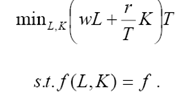
Source: Deacon (11)
Equation 8 – Input price ratio: variable inputs and capital of a firm are two essential determinants of input price ratio as of following equation. On the other hands, cost minimizing ration “L/K” satisfied common attributes of marginal rate of substitution through utilizing both of the variable inputs and the fishery’s capital.

Source: Deacon (12)
Equation 9 – Cost function: to express cost function of a fishery following equation has widely used in fishing industry where “f” expresses constant return, the function “C (w, r /T)” implies per unit cost of total fishing effort and annual total fishing effort referred through “fT”.

Source: Deacon (12)
Equation 10 – Industry profit: most of the quota regulators aim is to satisfying total fishing effort during a year as of equation (5) through utilization of “T.” Conversely, efficiency standard management has identified that every firm of the fishing industry required paying a constant price in terms of representing vessel owners as well as coordination of “K & L” to boost rental or profit values. Finally, industry profit of a fishing firm will quantify through substituting quota regulatory constraints of allowable catch (H) (4), cost function (9) and put them into the annual rent of a fishery or profit equation (7).

Source: Deacon (12)
Equation 11 – Efficient industry profit: The efficient coordinator recognizes that the regulator’s constraint on catch fixes total effort according to f(L,K)T = E , as in (5), so the industry’s choice of f (L,K) effectively determines T.
Recognizing this, industry profit in the ‘efficient’ case can be written and T can be regarded as a choice variable for the coordinator. The industry’s best choice clearly minimizes r T subject to T ≤ 1. The obvious solution is T = 1, or full season fishing.7 To summarize, the efficient allocation uses an L, K mix that minimizes cost given the effective factor prices, w and r/T, and scales total effort to allow fishing throughout the year.

Source: Deacon (12)
Equation 12 – Zero profit condition:
Source: Deacon (14)
Equation 13 – CES form:
Source: Deacon (15)
Equation 14 – Cost function in terms of effort:

Source: Deacon (16)
Equation 15 – Average revenue:

Source: Deacon (17)
Equation 16 – Season length production:

Source: Deacon (17)
Equation 17 – Total effort:

Source: Deacon (17)
Fishing Quota Market
Due to open access, fishing market has continuously suffered a serious disaster. During 1986, New Zealand has taken unavoidable initiatives to established ITQ (Individual Transferable Quota). Within 1998, ITQ has included more around 33 categories of species along with has identified over 150 fishing market in order to enjoy individual fishing quota advantages.
Assessment of these markets have evaluated trend of the current market activates, strategic pricing structure as well as primary obligatory issues quota management pricing. Consequence of the ITQ assessment have also discovered that newly identified fishing markets have rather supportive to gain optimal competitive advantages. Additionally, under this management fishing costs have also reduced radically.
On the other hand, statistical flow chart has showed that economical impact on the behaviour of profitability has a significant trade-off among dynamics of the sale and price (quota lease and sale prices and fishing output and input prices, ecological variability and market interest rates) of fishes.
Effect of the cost dynamics strategic management has magnify market price of the fishes and thus fishing industry has get rather profitability than before. At the end of evaluation, market analysts have drawn a conclusion that innovation of ITQ could be an effective strategic approach for efficient market management of fishing quota (Newell, James, and Suzi 2).
Common Fishing Quota Regulation and Current Amendment
Since 1983, common fisheries policies have strategically denoted by TAC (Total Allowable Catches), which has applicable on several types of spices available in the specific sea regions. Every year States Members of EU have meet and come to a decision about the amount of aggregate fish those could land by the fleets.
The TAC policy has executed an annual cycle or calendar and every year in December members have met to discuss on current prospect, dilemmas as well as propose necessary solutions.
The key limitation of the TAC policy have not prove its efficiency on mixed fisheries firm management and additionally, have continuously faced discarding dilemmas after landing. Statistics of the discarding/leaving fishes into sea after catch has faced severe dilemmas like major portion of those fishes have either die or physically injured a lot in such way they have not live long after discarding.
From beginning of 2003, the TAC has earnestly followed the fishing recovery programs to protect and nursing EU’s most threatened fish stores and supplies. More specifically, TAC emergency fish protection program has also consider and make restriction on fishing time as well as fishing efforts to continuing the policy of fishing limit.
For instance, view point of Scottish, the TAC emergency program has more concentration on “Cod.” After walking along time, the EC (European Commission) has recently proposed an amendment on TAC, fishing quotas as well as limits on fishing efforts, which have been effective from the beginning of 2010. Current amendment has referred as the scientific guideline and key points of this proposal has left behind fishing quota (Edwards 4).
South Africa and Global Fishing Quota Management
There is standard TAC fishing quota management that generate a common platform of South African Fishing Quota with global context. Firstly, for reducing of discarding in North Sea cod it would be most valuable for the fisheries to enlarge potentiality of the TAC policy to increase cod stock. Secondly, recent scientific guideline has alerted the North Sea fisheries about the poor condition of whiting stocks.
More over, in this region has suggested increasing severe cut in the fishing quotas. But the EC has stand oppose to this proposal and their argument is that though every year fishing quota has faced significant amendment, severe cut of quota management has not have any emergency role.
Thirdly, though EC has proposed for fewer sever cut of fishing quota but still now 15% substantial cut of quota has continued. Additionally, in this segmentation of fishing quota other than North Sea the West of Scotland Nephrops has also incorporated to follow TACs treatment.
Fourthly, compare tom North Sea the West of Scotland has contained poor figure in the recovered area of cods, haddocks, as well as whiting stocks. Currently, West of Scotland has keep up 25% cut of fishing quota but according to TACs, this percentage has not sufficient to recover of the point out spices.
Finally, after north and west, the Scottish fleet has considered most precious spices quota zone. Over 2009, this fishing zone has continued unmoved fishing quota. Now current amendment of the TAC has proposed 5% cut of fishing quota including Norway and Faeroes. For more clarification, UK fishing quota has illustrated in following figure.
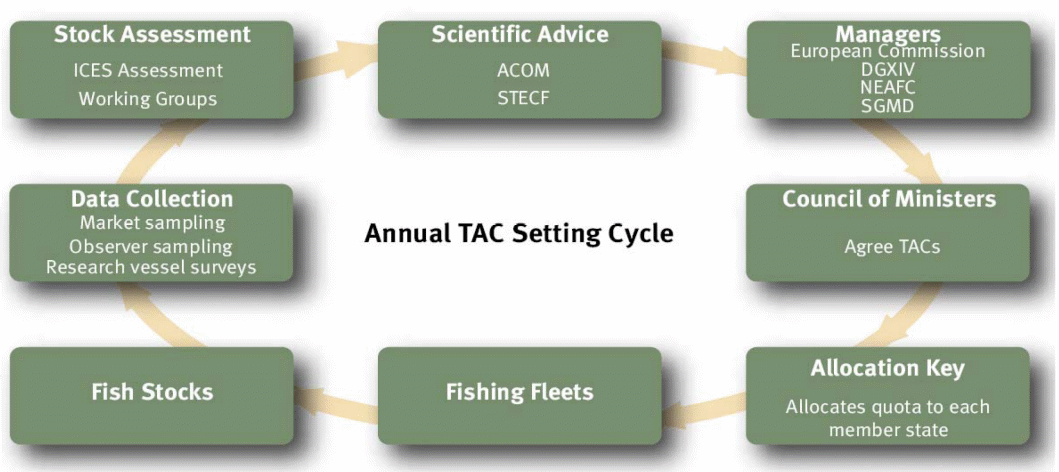
Cost-Volume-Profit Analysis and Profitability
Profitability analysis of an organisation has required to trade-off among three indispensable items revenue/before tax earnings, cost, and profit. Conversely, CVP is a traditional profitability analysis tool that has considered per unit activity cost of the prime cost drivers.
Under CVP, analysis the term volume has referred per unit cost of production and per unit sales price and thus it has illustrated during fluctuation of three dynamics of this analysis. In another word, CVP analysis is a framework to discuss of planning business operations along with supply of relevant data. Most of the cases CVP has utilised during early phases of business planning or production planning.
For more clarification, CVP relationships have drawn in following diagram explaining multi product issues. In case of cost assumption during this discussion, both fixed and variable costs have to include in order supporting of profit margin contribution. For the single product or service deliver variable cost have required emphasizing rather than fixed costs.
Besides production, planning CVP has also used to analyse an organisation’s overall operation like business/market segmentation. Key limitation of the CVP analysis has related between single unit cost of production and income statement utilised to quantify the number of single unit cost.
For the multiple product and service production, CVP has required to consider volume of production either by production volume or by amount required to produce target volume or both. Key benefit of multiple productions that it has reduced cost of production dramatically.
Additionally, income statement analysis of multiple productions under CVP has required diverse cost drivers account and here single unit cost have contained high cost to produce but aggregately gain high profit margin.
Finally, it has urgent to consider significantly that multiple production’s income statement should to be design in such a way that at the same time it has fulfilled organisation demands as well as consumers needs al well (Morse 19).
Research Methodology
Introduction
The process of formulating the paper, research designing, data collecting methods, importance of primary data and secondary dada, data measuring systems, and questionnaire designing are the main concern of this chapter. As a result, this chapter will play vital role to provide a clear perception about the chosen research method that is essential for the formulation of this dissertation.
However, many scholars like Sekaran (5) stated “research as an organised, systematic, data-based, critical, objective, scientific inquiry or investigation into specific problem, undertaken with the purpose of finding answers or solutions to it”.
Research Design
Saunders, Thornhill, and Lewis (33) and Cohen, Lawrence and Keith (75) focused on mainly two important research methods, for instance, qualitative and quantitative researches.
However, Sekaran (5), “qualitative research is playing vital role when some facts are known, but more information is needed for developing a viable theoretical framework” and Malhotra (29) further added, “quantitative research approach will assist to reach a conclusion by quantify the collected primary data”.
At the same time, the researcher of this dissertation will follow six major steps to formulate this paper and this steps are “problem definition, development of an approach to the problem, research design formulation fieldwork or data collection, data preparation and analysis, report preparation and presentation” (Malhotra, 9).
Primary Data
Cohen, Manion & Morrison (85) pointed out that the researcher should gather the primary data due to serve the exact purpose by specifying the current research problem, and Zikmund (62) further addressed that the researcher should collect such data to formulate the paper with real research from the actual site of occurrence of events.
The researcher will conduct field survey though this process of data collection need long-time; however, the author must take the advantage of advance technology to collect primary data from some of employees of Irvin & Johnson Limited (I&J) who are busy with their job but would like to help the researcher at their convenient time.
However, the author have decided to use such data because the impact of fishing quota regulation on the Fishing Industry in South Africa can be obtained from available published reports, which will assist the reader to understand the role of fishing quota, but this process may not contribute to identify research dilemmas regarding the case of the selected company.
The researcher concentrate on the overall impact of new fishing quota on environment and safety issues, the position of fisheries in terms of implementation, affect on annual revenue and investment, compares of old system with the new fishing regulations, political influence upon quota allocation, attitude of the selected employees on the new quota regulation and impact on small fisheries.
Interviews Method
Malhotra (172) argued that personal interviewing method is the best process to gather primary data but face-to-face interview is difficult to conduct because of high cost and lack of sufficient time; as a result, the researcher decided to gather primary data by applying face-to-face interviewing method.
On the other hand, the researcher will not use other instantaneous method (such as, electronic interviewing) though this type of method is flexible to collect data in terms of time and cost.
Secondary data
Cohen, Manion & Morrison (86) stated that secondary data has already exists and prepared data, and Malhotra (107) added that it is essential to study secondary data as it give general knowledge about the research problem and help to gather primary data.
In addition, Yin (35) and Zikmund (74) expressed that this sources are more dependable because these sources have already recognized by the renowned publishers, universities, or scholars. According to the view of Malhotra (107), the main advantage of secondary data is low time required, and easy to collect at comparatively lower costs, and some useful sources are accessible at free of costs.

Therefore, this study would be more resourceful and upgrade by taking information from different official documents, for example, different accounting reports on I&J, official documents of Department of Environmental Affairs and Tourism (DEAT), Ministry of Commerce, International Monetary Fund, EU reports, Marine and Coastal Management (MCM) and so on.
At the same time, the researcher will use other secondary documents like available journal articles on the topic, white paper on the Marine Living Resources Act 1998 to know the intension to pass this Act, management and law books, magazine, and other published prior study, statistical reports, relevant case studies, and conference papers to develop the quality of this dissertation.
Data Analysis procedure
The respondents will fill out the questionnaire or the researcher will complete the questionnaire in accordance with the response of the face-to-face interview to analyze the collected data. In order to do so, the author will use many techniques, for instance, design a primary plan to verify collected data to revise, edit, or inquire that all the survey forms have completed properly.
However, Marshall & Rossman (203) stated, “Data cleaning includes consistency checks and treatment of missing responses” and Malhotra (409) argued, “Consistency checks identify data that are out of range, logically inconsistent, or have extreme values”.
Moreover, Miles & Huberman (158) stated, “editing is the review of the questionnaires to check inconsistency while unsatisfactory responses are usually handled by returning to the field to gather better data, assigning missing values, or discarding unacceptable interviewees”.
At initial stage, the researcher will check all the survey forms in order to remove unsuited or conflicting data, and eradicate unintentional errors about the impact of fishing quota regulation in the fishing industry of South Africa.
Graphically represent the data in findings chapter by using Microsoft excel is one of the important goal of the researcher to show the result; therefore, this dissertation will concentrate on the comparing the outcomes of primary data with the outcomes of the secondary data regarding the fishing quota regulation in the fishing industry of South Africa.
Significance of Primary and Secondary data
Secondary data is important to provide theoretical framework of the financial reporting system, to select research methods for the study, to consider overall research objectives. On the other hand, chapter four findings and results, and chapter six recommendations will be based on the survey report; so both primary and secondary is crucial to formulate this dissertation.
Table 1: – Selected importance of primary and secondary data. Source: – Self generated.
Questionnaire Design
According to the view of Saunders, Thornhill and Lewis (188), the answers of survey forms will assist the author providing solutions to the policy makers as well as government bodies.
As a result, the author will consider several techniques, such as, finding out the required information, and selecting data collecting method for this study, finding the content of the questions, organizing the question structure inconsistent with the research aims.
At the same time, the researcher organizes the questionnaire with structured questions to search out specific response, therefore, the interviewees will get interest to complete the whole form and provide particular answer addressing the research gap.
However, the researcher will focus more on the global fishing regulation influence in the fishing regulation that govern financial reports in South Africa, what interests existing rule serves, who influenced by these rules, and how these rules affected the operation of large and small fishing companies.
The researcher will emphasize these questions, as these are necessary to understand and assess the emergence of regulation in South Africa. In order to give a clear idea about the questionnaire, the subsequent table shows the content of two parts –
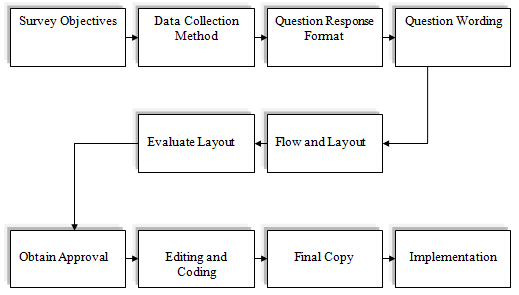
The researcher will consider a number of issues though designing a questionnaire is an art rather than a science, for instance –
- Effort required of the interviewees: most interviewees are reluctant to devote a lot of effort to provide information; so, initial questions should be interesting, easy, and not hostile;
- Context: questionnaire should consist of relevant questions; otherwise, interviewees will no response.
- Sensitive information: The researcher will cautious about sensitive issues because the respondents are unwilling to reveal sensitive information as this may cause embarrassment or threaten the respondent’s prestige or self-image;
- Structured Questions: the questionnaire will be consist of structured question, which will specify the set of response alternatives and the response format;
- Wording: Considering the vocabulary level of the respondent, the researcher will use simple and unambiguous words in the questionnaire;
- Logical order: questions will be organized in a proper order ;
Other: the researcher will scrutinize all the issues including question content, wording, sequence, form and layout, question difficulty, and instruction.
Measurement and scaling process
The aim of this part is to give an idea about the various measurements and scaling process of the data and it will mention the useful scale for this dissertation.
- Nominal scales: This kind of measurement process point out non-numerical questions, such as, name of the target respondents, nationality or job experience, and some other initial information about the respondents;
- Ordinal scales: This type of measurement system concentrate on definite questions so as to assess relative attitudes of the employees;
- Multiple Choice – Single Response: In this stage, employees of I&J Fishing Company will get at least three options, but they need to select only one option from three options;
However, the following table would help to understand the measurement procedure –
Table 2: – Measurement stage with Scale Types in Questionnaire. Source: – Self generated.
Reliability and Validity of Interviews
Here, it is essential to find out the inspiration to conduct field survey to collect primary data from the employees of I&J, and why the researcher is not only relies on the secondary resources.
According to the view of the researcher of this study, the most notable enthusiasm to conduct survey is that, knowing the opinion to the employees of I&J would play vital role to understand the real impact of fishing quota regulation on the Fishing Industry of South Africa.
In addition, the employees of I&J have more clear knowledge about the conceptual framework of quota links with business competitiveness and sustainability, strategic cost management in business environment, impact of new quota allocation on the fishing industry.
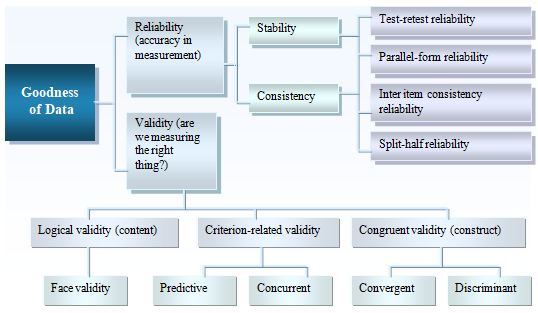
Limitation of Data Collection Process
Firstly, collection of primary data by using face-to-face interviewing method is the most difficult job to the researcher of this dissertation as the budget and time both were too short to complete the dissertation on time. In addition, most of the respondents sent the paper after completing major tasks and some of them was not co-operative at the time of interviewing process; so, their was risk to make some simple mistakes.
Find out the appropriate secondary data was also another challenging job for the researcher, as many academic journals, books, and other internet sources were easy to access but most of the journal reports were subject to purchases, and some internet sources are not authentic; therefore, this unreliable data sources can misguide the researcher in some point.
Finally, it was really unfortunate to the researcher that some renowned site sell journal article at high price; here, the problem was that it is difficult to understand by reading abstract and outline whether the articles important or not.
Findings And Results
The questionnaire has initially designed to address the first realistic impression of the major commercial fishing sectors of South Africa through the case study of I&J and then involved to keep a role in the progress of a sound policy framework identifying the lacking for appropriate policy guidance.
To assess the impact of fishing quota regulation in the fishing industry of South Africa in context of case I&J, this survey Questionnaire has organized for the target respondents aiming to the Captains directly concerned with fishing in the South African region and the business level executives engaged in different level of I&J concerned with quota related trading.
The responds of the Captains of different Vessel class of I&J are very significant in context of deep see fishing after the adoption of quota regulation while the business level executives are facing regular market attitudes concerned with the quota legislation.
The aim of the researcher is to analyze the response of the survey questionnaire to assess Impact of fishing quota regulation on the fishing industry of South Africa, particularly on the Irvin & Johnson (I&J).
However, it should need to address that the author distributed the questionnaire to 60 employees of the selected company, and 40 respondents gave their feedback at their convenient time. The researcher is going to carry on the research with 40 survey reports considering that rest of the respondents may not give feedback within timeframe.
General Information regarding the employees
Name, and Contact details of the employees of I&J
The aim of this question is to introduce with the employees to make sure that they are selected employees to carry out the survey for research on this topic.
Awareness of the employees about fishing quota
Before attempt to proceed on the next form, it is essential to know that whether the employees have general idea about fishing quota or not. Knowledge about the research area is significant factor in order to get proper outcome and avoid fabricated information; so, only those employees will proceed to the form B who can give correct perception of the impact of fishing quota.
Result
It has already mentioned that the researcher got feedback from 40 employees and all fill out both form A and form B, as all were aware about fishing quota.
View of the Employees
Do you think that the overall impact of new fishing quota would ensure safety for fishery resources?
About 70% of the employees agreed that new fishing quota would ensure safety for fishery resources, 25% employees disagreed with statement, and only 5% employees preferred not to say option.
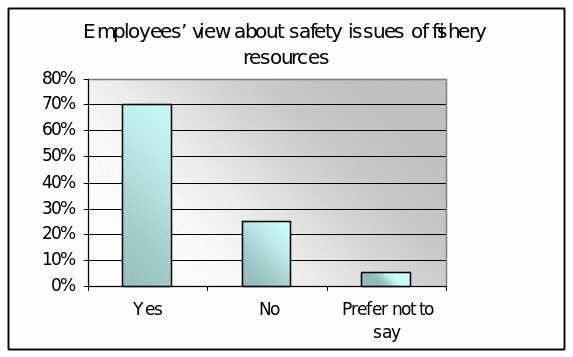
Result: According to the primary data, new law will help to increase fish stock in this zone because 70% of employees agreed with the statement. Before introducing new law, there was no rule regarding the size of ocean going vessels, category of using nets, and length of season to catch fish.
Do you think that the new fishing quota management system would be easy compliance option for the fisheries?
It is interesting that about all respondents reply this question, and 55% of the employees stated that new fishing quota regulation is easy to comply, and 45% employees disagreed with this statement.
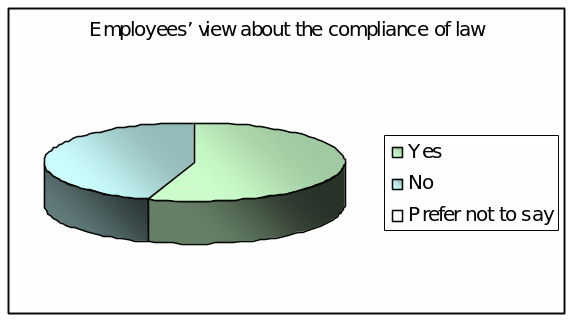
Result:– The response demonstrates the fact that 22 employees of the Irvin & Johnson companies argued that new law easy to comply while 18 employees disagreed with the statement. On the other hand, secondary data demonstrated that small fisheries seriously affected due to the strict fishing quota system; so, it is not easy for them to obey this system.
Are the fisheries honest to obey new fishing quota regulation?
As per response to this question, 55% of respondents appreciated the fact that Irvin & Johnson honestly implement the fishing quota regulation while 37.5% respondents disagreed of this statement and 7.5% employees were reluctant to response.
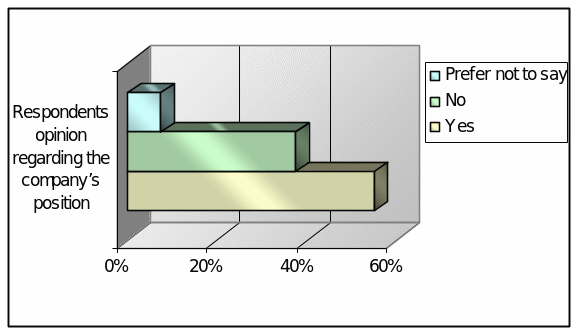
Result:– A significant portion of the respondents argued that Irvin & Johnson does not follow the regulation honestly, though the respondents worked for this company. Therefore, the company should follow the regulation strictly and honestly in order to help the authority to increase stock.
Is the new fishing quota regulation has reduced your annual productivity?
Amongst 40 target respondents, 75% employees pointed out that present rule has not decreased annual productivity of Irvin & Johnson, 20% employees believed that it would reduced productivity and 5% had not observed any change.
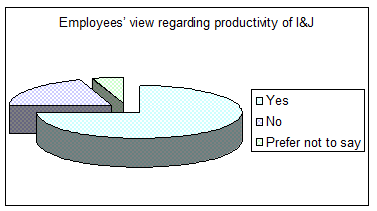
Result: – According to the majority of the respondents, the existing rule has not reduced productivity, so the company should honestly implement this regulation to establish good corporate governance practice.
Is the new fishing quota regulation has directly reduced your annual revenue?
It was an inevitable outcome that most of the employees would disagreed with the statement, for instance, about 65% employees stated that the annual revenue of Irvin & Johnson has not decreased due to the regulation, and only 20% employees agreed this statement and 15% had no opinion.
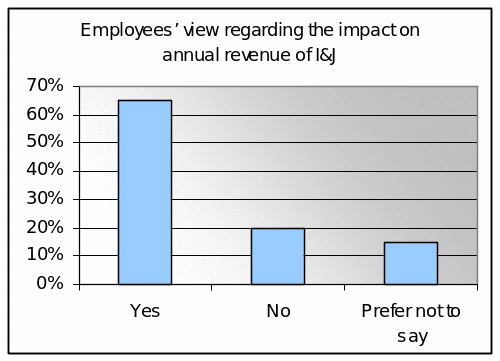
Result:– As most of the employees believed that new rule has not reduced productivity, it has no direct impact on the annual revenue of I&J. in addition, this company become market leader of fishing industry in South Africa and enjoy the facilities provided by this quota regulation.
Is the new fishing quota regulation has driven your company to go for harvesting?
About 87.5% of the employees stated that new fishing quota regulation has influenced the company to go for harvesting, and 22.5% employees disagreed with the statement.
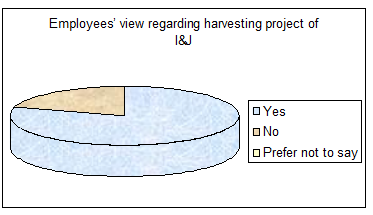
Result:– Irvin & Johnson has driven to harvesting in order to increase natural fishing stock, as this company is no longer interested to depend only on natural stock.
Is it involved your company for bulk investment?
According to the survey report, about 77.5% of the employees agreed this statement, 12.5% employees selected no option, and 10% employees had no idea about invest position after introduction of new law.
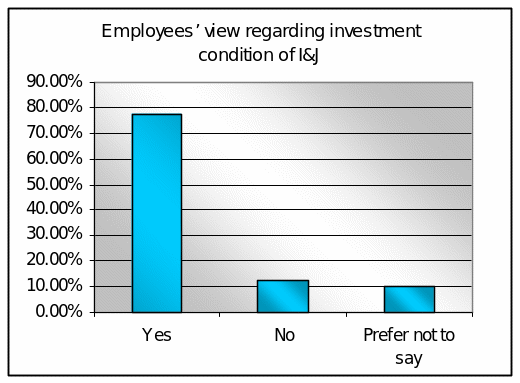
Result: – From the response of the employees, it is clear that large fisheries would require huge investment to implement new fishing quota system.
Are there any government subsidizing packages to complying with the new fishing quota regulation?
Most the respondents believed that there are some government subsidizing packages to comply with the new fishing quota regulation, for instance, 87.5% employees strongly agreed with this statement, 5% employees disagreed, and 7.5% employees had not comment on this issue.
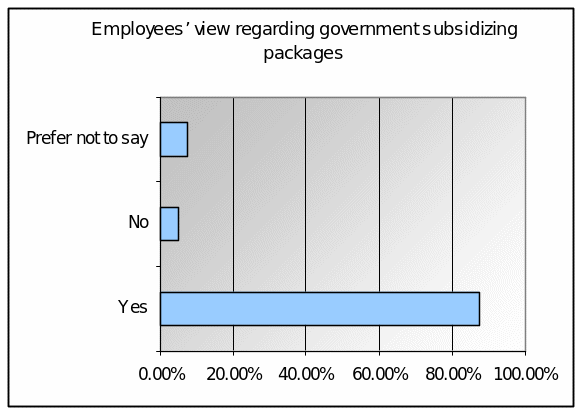
Result: – The above figure demonstrates that the government provide sufficient government subsidizing packages for helping large fisheries to implement fishing quota regulation successfully.
Do you think that the old fishing management was better than the new fishing quota regulation under your current operation?
It is important to note that about 80%of the target respondents have agreed to the fact that the old fishing management was better than the new fishing quota regulation, 12.5% of these employees disagreed to this statement, and rest 7.5% employees had no comments.
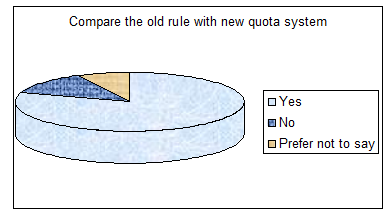
Result: – Despite the fact that old regulation destroyed the fishing stock, most of the respondents argued that old law was better than new law. The reason behind their opinion is they enjoyed more flexibility under old regulation “the Sea Fisheries Act 1989” in terms of vessel used, fishing season, and so on.
Do you think that the new quota regulation system is allocating quota fairly among the fisheries?
Among 40 employees, 60% of the respondents agreed that the new quota regulation system is allocating quota fairly among the fisheries, 35% employees said no option, and 5% employees had no opinion.
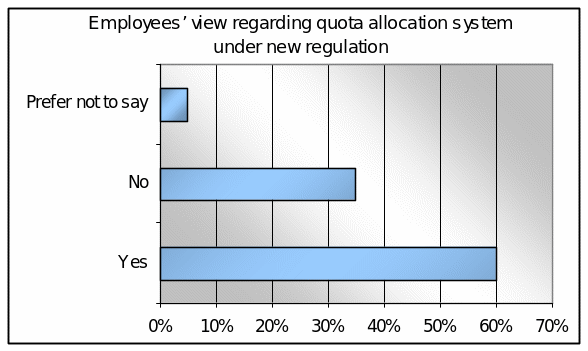
Result: – The survey reports illustrate that majority of the respondents have no doubt with the fairness of quota allocation system under new fishing regulation, but a significant portion disagreed the view because small fisheries adversely affected due to the discrimination.
Is there any political influence upon quota allocation?
According to the survey reports, 55% of the employees agreed with the fact that there is political influence upon quota allocation, but 40% employees disagreed with the statement, and 5% employees were not aware about this.
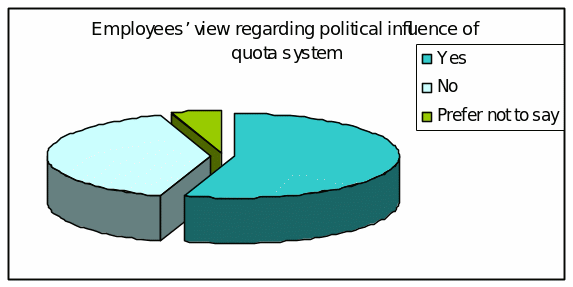
Result:– The existing fishing quota regulation need additional amendment to make potential improvement in order to remove political influence as most of the respondents acknowledged the existence of political influence.
Do you think that the new quota regulation system has facilitated small fisheries and family fishers?
In reply to this question, 40% of total employees stated that new quota regulation system has facilitated small fisheries and family fishers, 47.5% employees disagreed with the statement and only 12.5% employees provided no opinion on this issue.
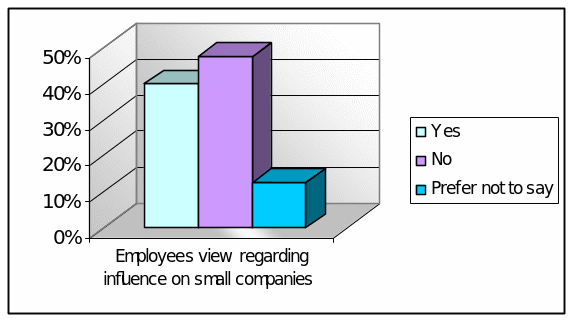
Result:– The purpose of this question was to find out what is the actual impact on the small fisheries in new environment and the survey results showed that quota system mainly assists large companies to make profit.
Do you think that the new quota regulation has contributed you better company far better than before?
It is important to note that among 40 employees, about 55% of the interviewees agreed with the fact that the new quota regulation has more contribution on the Irvin & Johnson, 40% disagreed with this statement, while the rest 5% employees prefer not to say regarding this issue.
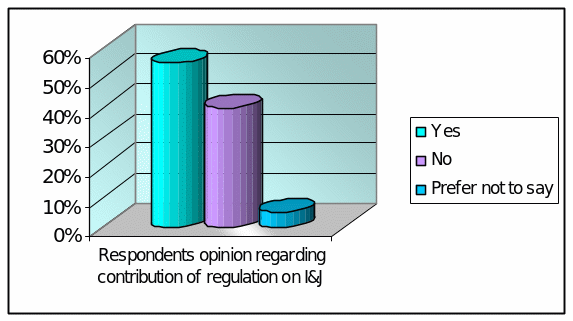
Result:– Indeed, it is widely accepted that new regulation gives more opportunity but a significant number of the respondents opposed this view.
Is your attitude towards the new quota regulation system is positive?
Amongst the total respondents, 95% people remain positive whereas the rest 5% argued negatively.
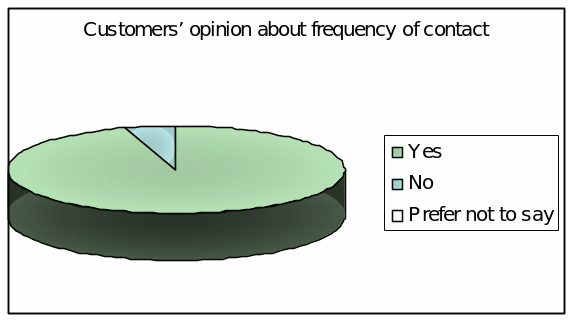
Result: It was amazing to find out that the highest number of interviewees has responded positively.
Do you thing that the new quota regulation system would be capable to increase the sustainability of fishing resources?
Among 40 survey reports, 75% of the employees stated that new quota regulation system would be capable to increase the sustainability of fishing resources, 20% of the employees disagreed with the fact, and 5% employees had no opinion in this issue.
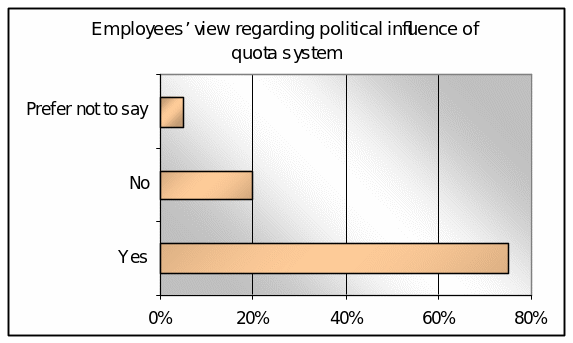
Result: If the fisheries implement and follow new fishing regulation honestly, the stock would be increase because the purpose of the Marine Living Resources Act 1998 was to increase the fish stock.
Does the new quota regulation system would be successful to reduce environmental hazards?
The researcher designed this question to assess the impact of new fishing regulation on the environment and find out that 92.5% of the employees agreed with the statement and only 7.5% employees disagreed with the statement.
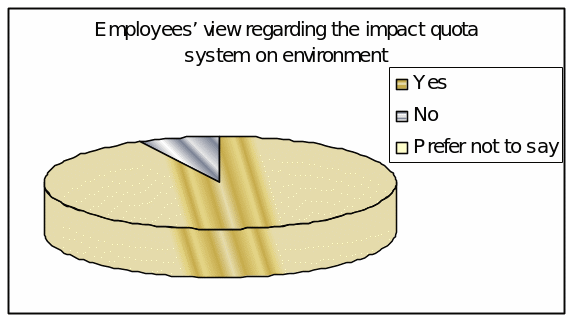
Result: It is significant to note that 38 respondents believed new quota system would help to protect the environment from the adverse impact of illegal fishing, which destroyed ecological balance.
Is your company’s expected revenue from a TAC has reached in the target?
It has been found that 65% employees were aware agreed this statement, 25% employees disagreed, and 10% employees had no estimation regarding expected revenue from Total Allowable Catches (TAC).
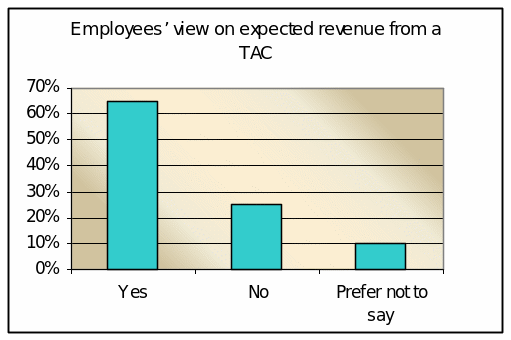
Do you agree to purchase quota from the small rights holder while they are not a boat owner with burden?
It is interesting that 40% of the employees selected yes option and 50% selected no option and 10% employees was selected preferred not to say. This means at least 20 employees would not support the company Irvin & Johnson to purchase quota from the small rights holder while they are not a boat owner with burden.

Result:– The result shows the fact that Irvin & Johnson have maintained good corporate governance system, so they are more concern to comply fishing quota regulation rather than making profit by purchasing minority shares.
It is important to note that it would not be possible for small companies to carry out business in new system as only five large companies controlled South African fishing industry. The majority employees’ view is correct while we consider the position of small fisheries in such competitive market.
Discussion
Initiative of I&J to gain business competitiveness and sustainability:
Company profile of Irvin & Johnson Limited:
Irvin & Johnson Limited is famous fishing company in South Africa, which has born in 1910 and stayed at Cape Town. For hundred years, I&J has significantly contributed in South African economic growth. Factories of the I&J Limited has scattered through vast areas (Woodstock, Mossel Bay, Port Elizabeth, Hermanus and Gansbaai) of the South Africa major business operation of the I&J Limited has to process and sales of frozen as well as chill convenience fish foods all over the South Africa.
Their business operation has also included large number of product line offerings (Par-fried, coated, sauce-filled portions, and co-extruded products, smoked fish and fishmeal products, hake fillets and portions, frozen fish sticks, frozen vegetables and fruits, frozen beef burgers, chicken and red meat products, and fish fingers; and individually wrapped hake loins, steaks or fillets) and product line of I&J has integrated almost 50 different foods items. Other than diverse fish foods the I&J has also processes and sale of vegetable, fruit, red meat, chicken and beef tilting junk foods.
Additionally, the company has available of self-made marinated, diet and healthy heart supported foods menu, endorsed products for weightless, both adult, teenagers and kids individual foods menu at a reasonable price level.
Apart from South Africa, the I&J has also exports their fish products in Australia as well as in the Pacific Rim nations. Another key information about the I&J is that it has operated their business operations as the subsidiary of the AVI Ltd company. In following table snapshoot of the I&J Limited has plotted. (Irvin & Johnson 1)
Table 3: Irvin & Johnson (2).
Current rivals in South Africa as well as Middle East (Businessweek 2).
Table 4: – current competitors of the Irvin & Johnson Limited.
Table 5: list of related organisation (Source: mbendi.com 1).
Competitive scenario and value chain of I&J
BCLME (10) pointed out that the fishing species in hakes rise and fall mostly 30% per annum in South Africa and in 2004 it was estimated supposed to 140 000 tons where the major part was congregated by Irvin & Johnson (I&J).
The creation of job opportunities by Irvin & Johnson (I&J) were enough explicit though there is enough pressure from the society and regulatory authority to maintain jobs in the course of their shore-based dispensation regardless to the short term profitability.
However I&J has the both financial and physical resources to maximising the economic value of its hake catch and to increase the number of enough freezer trawlers while its efficiency to address best industry needs that provide long term risk free financial benefits and effective const management.
With a prolonged historical background I&J the is running its business with profitably apprehend with most added value manner though new quota regulation keeps pressure to take advantage on its value chain.
Maintaining the long-term quotas regulation along with flexibility in fishing process, I&J is in practice to add more innovative value added products in the market. The belonging controversy of South Africa’s hake firmer and whiter, I&J is more attentive to adding value through producing ‘skin off’ fillets along with benefits gained from an global market premiums.
Meanwhile the value chain of I&J is evidently affected by quota regulation and government the policies certainly affect the value chain of the company from different perspectives and the most influential one is the quantity of annual harvesting.
The long-term quota regulations will give more confidence to the company to maximise profitably and encourage it to involve elevated capital investments essential to adding value to its product line. Another essential factor to increase value is the co-management that can facilitate to reduce risk factors and ensure sustainable fishing practices in South Africa. Following figure demonstrate the value chain of I&J –
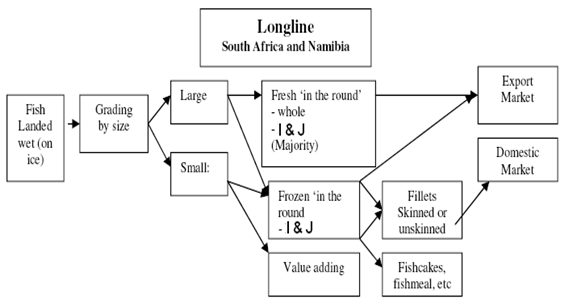
Market sustainability
At the beginning of 2009 it has rather tough for I&J to maximise their economic volume. However, sustainability during South African fish market, I&J has a lot of modern initiatives through utilization of modern expertise resources during production of the fishes.
Not only in South Africa but also for the first time in world I&J has introduced silver kob in order to spawn and additionally, larvae rearing by employment of weaning. Algoa Bay is the natural supplier of the silver kob due to its temperature profile and under this circumstance I&J has got advantages to produce more spices as well as fish foods.
Consequently, availability of natural resources as production infrastructure along with near to harbour like the Port Elizabeth have also made easier span of sustainable market of the I&J. moreover, independent monitoring, inspection and auditing authorities of the I&J such as universities have provided necessary instructions for sustainable market. Apart from successes stories of I&J, lets have a look on the constrains of this company.
Since factories have located proximity to the sea region it has difficult for the I&J to relate hypothetical market sustainability issues and additionally, market of fishes have rather sensitive than any other industries. In this case, sea storms and related natural disasters are the most prime obstacles to resist economical cost controlling and conversely, high cost of spices production.
Here it has to be quoted that in different region cost of spices production has varied and, market sustainability of the industry has forced by the price index and consumer choice aggregately. Finally, viewpoint of environment pollution has great risk of benthic substrate pollution of the surrounding areas of the factories. (Landman 9)
Strategic Cost Management of I&J Under Quota Regulation
Quota regulation in South Africa and position of I&J
All over the world, it has greater significant to be aware of environmental issues during business operations and for the fish industry and fishing quota regulation land, water and air have required risk free commercial ventures to keep an healthy atmosphere. Environmental awareness under fishing quota regulation I&J has several significant and positive initiatives.
I&J has formulated their business strategies considering legislation issues under fishing quotas. In this case, they have more concern on management of marine resources as well as pollution where both internal and external business strategies of I&J has committed to follow regulation of immature fish catching. For instance, health, and hygiene environment for the immature spices I&J has 800-trained employees.
According to the code of conduct of the M and C (Marine & Coastal Management) for fishing I&J has several significant and optimistic trade-offs among fishing authorities and organizations to promote key purpose of the marine conservation taken by the South African government as well as fishing quota management.
I&J initiatives has also attracted common people of the South Africa to participate in conserve marine atmosphere of the South Africa as well as natural resources. In doing so, I&J has taken several projects and one of them is to distribute 62,000 NMD (National Marine Day) posters among common people (schools, libraries and environmental organisations throughout the country) and especially for the students of DEAT (Department of Environmental Affairs & Tourism). Since 1995, I&J has supplied necessary foods during a year of marine life stayed at the Cape Town.
Meanwhile, I&J has also arranged “Two Oceans Aquarium” exhibition, which has titled as “I&J Predator Exhibit”. Since last 17 years, I&J has sponsored to publish colour posters to educate South African peoples about the marine creatures placed in South Africa.
These materials have great popular al over the South Africa (environmentalists, libraries, schools and government offices). To be aware of fishing quota and marine conservations, I&J has another imitative to sponsor for the marine pages published by the Envirokids magazine so that primary children would learn on South African W&ES (Wildlife & Environment Society).
To promote fishing quota in South Africa, I&J has produced and distributed the Pelagic Seabirds posters among students and researchers and hence, this project has supported the fisheries industry as well as fishermen to prevent unexpected seabird fatalities due to prone.
At the end of this topic, it has also pointed that for any type of environmental issues in South Africa I&J has supported and participate in the creation of enviropaedia.
Cost management of I&J
The following table has described the trade-off among number of vessels and capital volume of I&J. within their 100 years experience, it has indicted that small size vessels has not an indicator of the company volume or size.
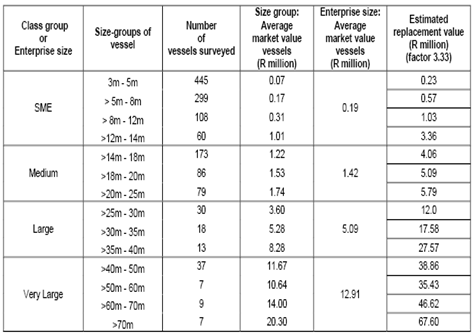
Commonly, South African commercial fishing business operation has divided by five categories (Micro, Small, Medium, Large and Very Large) and CVP analysis of this sector has illustrated by firm size along with its capital volume. According to the requirement of this part, here capital and market scale of I&J has discussed.
However, in case of ESS vessel of I&J most of time they have conveyed unreliable data as well as variable terms of entities. Hence, it has quite difficult to arranging primary sector base fishing cost analysis in case of vessels including I&J’s vessel level of types. In following graph, different types of vessel of I&J along with average capital volume have plotted. (Rhodes University 123 – 125)
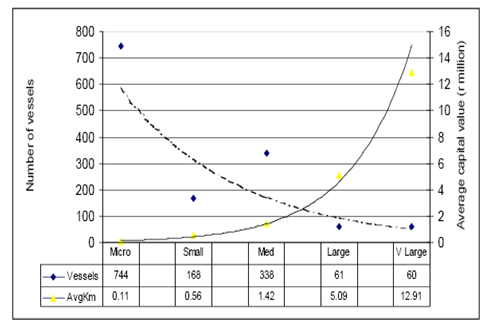
The direct affect of quota on the profitability of I & J
Profitability scenario of I&J
According to the TAC, South African aggregate catch quantity has reduced by 3.3 % during 2008 and again has reduced by 9.2 % during 2009. In short, aggregate reduction of allowable catch has reduced 28% and in terms of quantity it has reduced from (33,531–33,199) tons.
Conversely, in the Argentina reduction of TAC has not at large amount during 2009 and it was 1.9% and hence 19,875 tons in the Alpesca. Here it has to be pointed that I&J’s hake resource as well as ocean conservation has monitored and controlled by the MCM (The Marine and Coastal Management), which is the prime division of South African DEA (Department of Environmental Affairs).
From 2007, I&J hakes has developed in such a way that has encouraged dramatically magnifying aggregate bio-mass along with increase of allowable catch including material improvements as well. Hence, I&J has wished rather to modern their MCM recording, monitoring and controlling from this year (AVI 13).
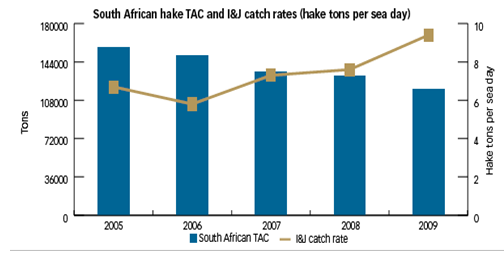
Compare to 2008, in 2009 aggregate revenue of I&J has increased from (R6.7 – R7.5) billion where consolidated gross profit margin has reduced from (41.3 – 39.9) % due to high cost pressures and additionally, increased only sales prices of I&J products.
Within 2009, total selling and administrative cost of the company has 6.1% of the revenue and where operation profit margin has increased by 13.7% and in terms of quantity it has R908.5 million. Conversely, because of high interest rates totals financial charges have increased from (R64 – R125) million.
In case of stock scenario, headline earnings of I&J has enlarged by 6.9% or R520.4 million where per share headline earnings has increased by 9.9% and in terms of WACC and number of shares 174.7 cents per share. A significant event, with 12 months from July 2008 to June 2009 any single share of I&J has not repurchased.
Before tax payment capital item of I&J has quantified by R17.1 million and from there profit margin from sales volume has amounted by R23.8 million. Cash generation in 2009 has dramatically increased by 67.1% and amounted by R1, 116.6 million and this improvement has reduced working capital of I&J by 19.7% in sales region, which was 16.8% during 2008.
During the fiscal year of 2008, I&J has paid tax of R392.9 million where capital expenses has amounted by R257.8 million along with dividend of R 724.4 million. As part of long-term fishing fleet replacement, I&J has required spending R42.8 million in the area of additional vessel (AVI 17).
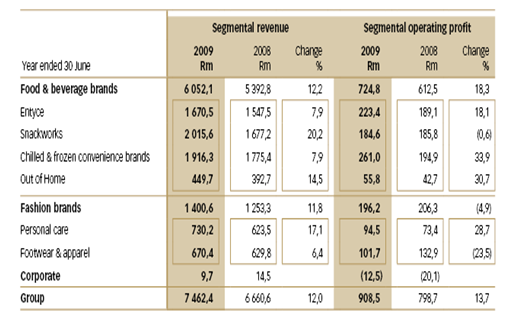
Influences of quota on the profit margin of I&J
Fishing quota has given the opportunity for the first time to I&J to cultivate indigenous spices. Key benefit of this cultivation is that both domestic and international fish markets have huge demand and thus profit margin of I&J has boosted. Conversely, grow out through refining as well as supply of seed of these spices has superior business scope to build a sound supply chain management to produce indigenous spices from South Africa.
Not only high profit margin of I&J, production and supply of indigenous spices have reduced unemployment dilemmas of South Africa and hence national economic development. Moreover, indigenous spices cultivation has skilled fish farming of the South Africa improve supply chain modes as well as developed support service infrastructures of this industry.
Other than high profit margin, I&J has suffered several constrains against their profit growth those have composed of both socio-cultural as well as natural disasters. At first, coast of the South Africa has globally famous for winter storms and thus this obstacle has resisted fish farming proximity to the South African coast.
Though I&J has tried hard and soul to construct cages in such way to defend as well as mitigated the threats of these natural disasters, but the key problem of this initiative has resisted economical workplace circumstances.
On the other hand, to obey the code of conducts of the south African fishing quota I&J has required to locate their cages at demarcated places where have threats of theft and not adequate scope to monitor from the “Port Control Tower” at night as well as in public holidays. Additionally, sharks along with seals have left threats of natural predators for firming as well ass fishing culture executions during the authorized areas.
Finally, suppositious view of the common people on farmed spices along with several environmental pollution issues like sewerage, outfall left by ships as well as metropolitan (Landman 9-10).

Conclusion
Recommendations
The impact of quota regulation on fishing industry of South Africa as well as case analysis of I&J are two prime issues of the paper; therefore, both literatures and case analysis illustrated how strategic cost management of the fisheries has kept profitability and business sustainability as well as how to reduce their struggle.
Under this supervision, practice of strategic cost management in the light of fishing quota management in South Africa, I&J and the other famous fisheries faced several limitations of revenue generation as well as required to keep the stock of fish as prescribed by the fishing quota.
In order to overcome from these dilemmas this part has prescribed a set of recommendations for smoother application of quota regulations as well as cost management.
Government initiatives to restructuring constitutional efficiencies for decentralization of current management framework
Case analysis of the South African fishing industry as well as their quota regulations discovered that 75% of the market share possessed by small number of big giants where, historically white empowerment dominant rather than black owned small and medium companies.
In order to relief from this centralisation dilemma, government should have to pay attention on restructuring of fishing industry with the aid of Section 9, sub-section 2 since, the Constitutional framework suggested effective measures to gain equality as well as decentralisation of the fishing rights through two fundamental strategies.
Firstly, reallocation of current TAC requirements where total allowable fish catch has not yet fulfilled applicable quotas during open season. Secondly, application of the Section 2(j) and Section 18, sub-section 5 due to delivering prominent status of the granting quotas during transformation of the existing industry.
More specifically, encouraging new entrants specially black owned firms to free from the historical demerits, but government should to alert on losing fishing power by transferability in significant region (Saflii 2).
Reformation of government policies to establish ideal fishing agenda for the black fisheries
Present government is highly enthusiastic to addressing people’s choice and acceptation whilst reforming fishery sector and fishing policies of the government. In doing so, government should to more emphasis on struggle of the black stakeholders along with RDP program as of election commitments rather than ANC. Since ANC has greatly slower significance dynamics of both politics and society.
Two strategies would support African government to lessen challenges of the fishing industry and to make easy access of the black fisheries. First, reallocate nature of access rights into fishing industry by balancing rights of the individuals as well as the state.
Moreover, the government’s second agenda should to work for re–positioning user groups and their interests during formulation and implementation of Ministerial strategies. In this way, government could be able to forming time-honoured initiatives to justify both positive and negative impact of fishing quota on economic development of South Africa (Mayekiso et al. 2).
Responsibility of the fisheries
At present globally, fish are the most demand full traded food commodity. In regarding this issue, two parties evolved with diverse opinions where one group claimed that fish trading as an important tool of generating national income. On the other hand, another party exposed that trade of fish is a great threat for global and domestic food security.
Standing in front of two oppose views, South African fisheries have several socio–economic responsibilities for the development of domestic economy as well as for a stable food security.
Escape from pessimistic views responsibilities of South Africa fisheries can categorize through four major tools like, contribution on State’s production export, contribution on per capita income through export revenue, proper implementation of fishery deeds of both domestic and international specially, fisheries deed among south African nations and European Union nations.
Finally, it should to quote that trade of fish has not only influence on nation’s economic development also significantly reduce unemployment dilemmas, meet the animal protein of society and most importantly, keep the balance of natural ecosystem as well as food chain. (Béné 3–14)
Sustainability of the fish stock in a favourable atmosphere
To facilitate durable sustainability of the South African fish stocks it would be more wiser to reform current fishing methods by utilizing small vessels and in addition, explicit latest fisheries legislation namely the MLR (Marine Living Resources) Act that principally contained the attributes of equal opportunity, sustainability as well stability of fishing stocks.
Alternatively, Northern Cape Province would be an ideal source of new fish and matriculture zone. On the other hand, an immediate emphasise on small scale fishing (St Joseph sharks, hottentot, snoek, harders and bakkies like small dinghies with outboard motors) and additionally, promote them will have contribute a durable fishing stock sustainability.
Moreover, resource management of fishing and Mari culture would be providing emerging economic development of the state if inventories of the fishing executed appropriately. And finally, FAMDA (Fishing and Mariculture Development Association) will be most modern initiative for most supporting tools of fishing sustainability in South Africa as well as effective promoting tools of aquaculture development. (Britz et al 1 – 9)
Appraisal performance of the fishing quota regulation to explore the effectiveness of strategic tools of cost management
This recommendation has prescribed how to follow an efficient and strategic cost method therefore, fishing quota regulations of South Africa would not be hampered business profitability and durable sustainability.
In the light of this argument, performance appraisal and cost management of South African fisheries would be more effective if they will follow four stage management regimes during constructing cost structure of their company. Firstly, proper implementation of TAE (Total Allowable Effort) has radically efficient to reducing fisheries total cost volume.
And here, cost control would be termed as the output control regarding the relationship among input control and limitation of the TACs. On the other hand, cost criteria should to involving in three areas namely, MSC (Management Services Costs), research costs and enforcement costs.
Though commonly, fisheries management regimes of a country limited through biomass extraction and for this reason, vessel costs has required least cost value where as fish production and research cost required larger cost volume. Considering this aspect, economic cost management of the South African Hake’s would make them more sustainable.
Conversely, major limitation of cost structure would have minimised through appropriate TACs during open and restricted season, required entire technical support of a fishery, impose time limit for the fishing vessels and at last, make limit on number of vessels as well as their category to authorise to catch fish. (Zableckis et al. 3-65)
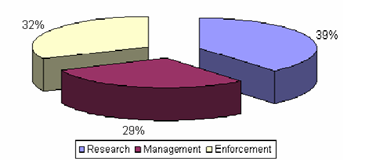
Conclusion
The entire paper has briefly illustrated that what are the impact of fishing quota regulations on fishing industries in South Africa with key limitations and potential recommendations. Additionally, the paper has also emphasised impact on strategic cost functions in the light of quota regulations.
In this concluding part, it should to inform that fisheries management, fisheries policies and the constitutional frame of South Africa has highly appreciated in global fishing industries. On the other hand, regarding the complete paper, impact of quota regulation in African region has currently faced crisis of proper application of the fisheries legislation through an efficient and effective manner in the area of durable commercial markets.
Alternatively, method of TAC is now considered most reliable as brief codification policies of South African fisheries that have complete guideline of strategic cost functions for all kind of fisheries entity. From this view, though the current fisheries policies have some operational complexities, but compare to another decade South African fisheries has currently passed most challenging as well as fascinating stage.
Complete effort of government and existing fishing companies would easily recover the current dilemmas if they would amend the entry regulations of new companies with an equity facility. Moreover, make a flexible market for the black owned small and medium enterprises with new coastal and vessel zone for fish production would also mobilise Africa’s National Vision of 2030 for development of fishing industry.
At the end of this part, here also quoted that, by reducing white empowerment, reallocation and reformation of current quota regulation would foster government policies of fisheries development as well as cost effective for the existing and potential industries for a long lasting business stability.
Work Cited
Alexander, James. Quota Busting Ideas for Selling Professional Services Nine Steps for Creating a Superior Sales Force. 2010. Web.
AVI. Annual Report 2009 of AVI. 2009. Web.
Banker, Rajiv. and Johnston, Holly. Strategic Management Accounting and Control. 2001. Web.
BCLME. Beneficiation and Commercialization of Fishing Activities. 2006. Web.
Béné, Christophe. Global Change in African Fish Trade: Engine of Development or Threat to Local Food Security? 2008. Web.
Berzofsky, Marcus. et al. ASA Section on Survey Research Methods. 2006. Web.
Boadu-Amanor Vincent. Enhancing Competitiveness with Value-Adding Business Initiatives: Economics and Strategy Issues. 2003. Web.
Britz, Peter et al. Towards Equity, Sustainability and Stability: A Sector Planning Approach to Fishing and Mariculture Development in the Northern Cape Province, South Africa. 2000. Web.
Cohen, Louis., Lawrence Manion, & Keith Morrison. Research Methods in Education. New York: Routledge, 2007. Print.
Cooper, Robin., and Slagmulder Regine. Target costing for new-product development: product level target costing. 2002. Web.
Datta PR. Lecture-7 Sustaining Competitive Advantage. 2008. Web.
Deacon, Robert. David Finnoff, and John Tschirhart. Restricted Capacity and Rent Dissipation in a Regulated Open Access Fishery. 2008. Web.
Deloitte. Embedding Sustainability within Your Business Model. 2001. Web.
Edwards, Tom. Sea Fishing: Quotas for 2010. 2009. Web.
FAO. The State Of World Fisheries and Aquaculture 2006. Web.
Gaiardelli, Paolo. Nicola Saccani, and Lucrezia Songini. Performance measurement of the after-sales service network—Evidence from the automotive industry. 2007. Web.
Gordon, Scott. “The Economic Theory of a Common-Property Resource: The Fishery.” Journal of Political Economy 62 (1954): 90-99. Web.
Hasan, M. Babul, and John Raffensperger. “A Mixed Integer Linear Program for an Integrated Fishery”. Journal of the Operations Research Society of South Africa 22.1 (2006): 21. Web.
Hersoug, Bjørn et al. Rights Based Management in Fisheries. 2007. Web.
Hinterhuber, Andreas. Value Chain Orchestration in Action and the Case of the Global Agrochemical Industry. 2002. Web.
Irvin & Johnson. Company overview of Irvin & Johnson Limited. 2009. Web.
Kato, Yutaka & Yoshida, Eisuke. Target Cost Management and Organizational Theories. 1998. Web.
Korpi, Eric. Life Cycle Costing: A Review of Published Case Studies. 2002. Web.
Landman, Robert. Irvin & Johnson (Pty) Ltd. 2006. Web.
Lord, Beverley. and Lawrence Stewart. TQM Implementation: A Case Study of MGT (Management’s Questionable Technology). 2001. Web.
Malhotra, Naresh. Marketing Research- An Applied Orientation. London: Prentice-Hall, 2009. Print.
Marshall, Catherine. and Gretchen Rossman. Designing qualitative research. Thousand Oaks – CA: Sage, 1999. Print.
Martin, Richard and Jesper Raakjær Nielsen. Creation of a new fisheries policy in South Africa: The development process and achievements. 2007. Web.
Mayekiso, M. et al. Fishing Rights in South Africa – Use of Property Rights in Fisheries Management–Governments Issues. 2011. Web.
Miles, Matthew. and Michael Huberman. Qualitative Data Analysis. Beverly Hills, CA: Sage, 1994. Print.
Monden, Yasuhiro and Hamada Kazuki. “Target Costing and Kaizen Costing in Japanese Automobile Companies”. Journal of Management Accounting Research, 2001. Web.
Morse. Chapter 3: Cost-Volume-Profit Analysis and Planning. 2005. Web.
Newell, Richard., James Sanchirico, and Suzi Kerr. Fishing Quota Markets. 2002. Web.
Normann, Anne Katrine. Fisheries Policy Reforms In The Transition To Democracy In South Africa And Mozambique. 2006. Web.
Parkinson, John. Sales and Production Volume Variances in Standard Costing. 2008. Web.
Pearce, Brian. Sustainability and Business Competitiveness. 2003. Web.
Rhodes University, September 2003, “An Economic and Sectoral Study of the South African Fishing Industry”, Volume 1. “Economic and regulatory principles, survey results, transformation and socio-economic impact”. Web.
Saflii. In The Constitutional Court Of South Africa. 2004. Web.
Saunders, Mark. Thornhill Adrian, and Lewis Philip. Research Methods for Business Students. London: FT Prentice Hall, 2006. Print.
Sekaran, Uma. Research Method for Business. London: John Wiley & Sons, 2006. Print.
Yin, Robert. Case Study Research: Design and Methods. Beverly Hills, CA: Sage, 2003. Print.
Zableckis, Sarunas et al. Costs of Management in Selected Fisheries. 2008. Web.
Zikmund, William. Business Research Methods. Orlando: Harcourt Publishers. 2006. Print.